#Three White Soldiers pattern example
Explore tagged Tumblr posts
Text
How to Trade the Three White Soldiers Pattern: Strategies and Examples
Technical analysis offers traders a wide range of candlestick patterns to predict price movements. One of the most reliable and bullish reversal patterns is the Three White Soldiers. This pattern, when used correctly, can signal a strong trend reversal and provide profitable trading opportunities. In this post, we’ll explore what the Three White Soldiers pattern is, how to identify it, and…
#Best strategies to trade the Three White Soldiers pattern#breakout trading patterns#Bullish candlestick pattern#Bullish Reversal Pattern#bullish trend reversal#candlestick chart patterns#Candlestick pattern confirmation#How reliable is the Three White Soldiers candlestick pattern#How to identify Three White Soldiers on a chart#How to trade Three White Soldiers#How to use RSI with Three White Soldiers pattern#Identifying Three White Soldiers#Intraday trading strategy using Three White Soldiers#Japanese candlestick patterns#learn technical analysis#Price Action Trading#Risk Reward Ratio#stock markets#stock trading#Stop Loss Strategy#successful trading#support and resistance zones#technical analysis#Technical analysis candlestick patterns#Three White Soldiers candlestick#Three White Soldiers candlestick pattern in stock trading#Three White Soldiers confirmation#Three White Soldiers pattern#Three White Soldiers pattern example#Three White Soldiers pattern with volume confirmation
0 notes
Note
I know this can be too much of an outlier, but do we have any idea if Alexander was a particularly fashionable person? Either if he was into fashion itself or if he was considered fashionable in his clothing style for example
Clothes Make the King?
Alexander’s clothing choices weren’t about fashion, but about POLITICS. What he wore sent a message.
First, three quick points about clothes in ancient Greece:
They were relatively simple with few sewn seams, and by Alexander’s day, any patterning largely along the edges. Most was made of wool, linen being very pricy.
They were made at home by one’s female family members. Yes, even the wealthy. A woman’s worth wasn’t measured by her pie crust or biscuits, but her weaving quality.*
They were expensive if one had to purchase cloth (as opposed to having it made at home). Most people had only a handful of tunics, one cloak and/or one himation (wrap), and one pair of shoes.
And finally, pertinent to this discussion:
By the 4th century, especially austere clothing was associated with moral virtue, while highly patterned clothing + lots of jewelry with moral decadence (the East/Persia).
Ergo, descriptions of Alexander’s clothing in the sources send a moral message: as he descended into vices and Asian tyranny, authors show him wearing extravagant, Asian-style clothing.
BUT he also did make choices of what to wear (insofar as we can be sure they were his choices), that conveyed his own messaging. Detangling his messaging from later author’s messaging is a continual problem, but sometimes it’s possible.
We’re told Alexander dressed the same as his soldiers. Differences in wealth would have been indicated by the quality of the wool and COLOR, but not the style. Being able to wear, say, black (made from the wool of baby lambs born black but who turn white as they age), or saffron yellow (made from the tiny pistils of flowers), or dark blue or purple (made from murex snails and imported at a hefty price)—THOSE tell you the person has money. The cut and drape of the clothing mostly doesn’t. You can pick out the king by the bright dot of yellow or black in a sea of dun, browns, dull reds, darker greens, and ecru.
What message is he sending? “I’m one of you…except the king”: primo inter pares (first among equals). Similarly, his armor was the same type, just brighter and better-made. His (iron!) helmet must have looked like he raided a mop closet with a big red horsehair crest and two fluffy white feather prongs beside it. But otherwise, it was a Phyrgian-style helm like the rest. During battle, this makes him easy to spot by his own men—but also the enemy. Which is the point too: he has the bravery to make himself a target.
(A side note: this reminds me of Ukranian President Zelenskyy's choice to dress only in military green while his country is at war, even when criticized for not wearing a suit to state meetings. His clothing choice sends a political message as well as one of solidarity.)
After the death of Darius, he began to adopt some Persian royal dress, at least when dealing with Persians—with a couple exceptions. He refused to don trousers, the kandys (a special sleeved coat), and (maybe) the upright tiara. There’s some debate on the latter. Basically, he adopted Persian clothing that was less likely to offend the Greeks. It offended them anyway (because it was Persian), but he stayed away from garments especially associated with Asia: the hated Asian trousers, the kandys, and the Persian “crown” or upright tiara, going with the less offensive diadema that was already in use in Greece, albeit not as a symbol of royalty. Men already regularly wore a fillet; it was as ubiquitous as a ballcap in the US (and equally associated with “sporty” types).
So, he was trying to walk a middle road with the symbols of kingship while avoiding the more notorious. Again, he seems to have let COLOR stand in, giving purple cloaks and hats (kausia) to his Companions (Hetairoi), and Persian-style red horse trappings.
So he wasn’t a fashion guru in the usual sense. As king, he set style, he didn’t mimic it. Below is a late Hellenistic-era statue of him (Demetrio Alexander) wearing what seems to be standard Macedonian soldier dress.

Here are two earlier posts (with pictures!) about Macedonian (top) and Greek (bottom) clothing.
* There’s a funny story of Alexander getting in trouble by sending the Persian royal women a gift of weaving material for their entertainment. In Persia, slaves and low-borns did the weaving, so they thought he was telling them they were to be slaves and/or insulting them. He’d meant it as a compliment! His own mother (and/or sisters) made his clothing, so he was offering them status as his family members.
#asks#Alexander the Great#ancient Greek clothing#ancient Macedonian clothing#ancient Persian royal clothing#clothing in the ancient world#Classics#tagamemnon
45 notes
·
View notes
Text
Keith Windham’s Uniform: A Long and Highly Speculative Deep Dive into the Royal Scots’ Uniform in 1745
This is something I’ve wanted to research for a while—uniformology tends to be my favorite aspect of military life, so naturally, provided with a redcoat officer protagonist who quickly stole my heart as a character, I wanted to be able to do his uniform justice in my depictions of him. Let me first start by saying that there is no shortage of excellent art in this fandom, and furthermore, most of the uniforms I have seen depicted in said art actually seem quite well-researched and accurate, especially given the limited information available. I by no means pretend to be an expert on this matter—I am much more familiar with late 18th century AWI era uniforms, and even then I am no scholar—but this time period in uniform history is surprisingly elusive, and I felt inclined to find out more by doing a bit of a (admittedly self-indulgent) deep dive. This will be a long post, intended to be something of a reference, largely for myself, detailing the specific appearance of our Major Windham’s uniform as best I can.
It must first be established, however, that information on this specific period of uniform is scant. My first “launching point” was this excellent post by Bantarleton discussing British uniforms during the Jacobite Rising (which I highly recommend checking out for more qualified Speculation), which also served to corroborate what I was already beginning to see in my research: between the years of 1742 and 1751, we lack any solid evidence as to what British uniforms may have looked like. The hypothetical image I am assembling here is based, therefore, largely on educated speculation, as are most of the modern depictions of uniforms during this time period. Take all of this with a grain of salt, as you would any other historical post by a user on Tumblr, and bear in mind once again that I am not a scholar. But with that being said, we can begin in the closest place that we do have visual evidence: in 1742.
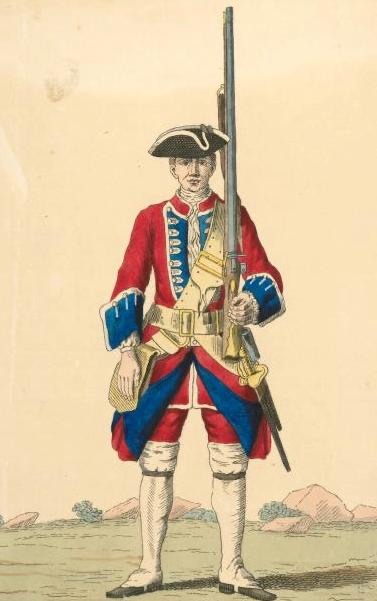
It was during this year that the Cloathing Book was commissioned by the Duke of Cumberland for King George II, which depicts the regular soldier’s regimental uniform across the military. Here we take a look at the 1st Royal Regiment (Royal Scots, though they would not be officially called that until the 19th century) uniform, which our Keith presumably would have worn some three years prior to canon, though assumedly not as a regular, which this soldier is.
Our second concrete visual of the same regimental uniform comes from 1751, portrayed by David Morier, who was commissioned probably by the Duke of Cumberland to paint a grenadier from each regiment. Why grenadiers, we can’t know—maybe for their fancy caps—but the uniform is essentially the same as would be the regular’s, with the exception of the cap (interestingly, I discovered the flanking company “wings” would be introduced only in 1752). The officers and the battalion men would all have been wearing cocked hats similar to the one portrayed in the previous photo.
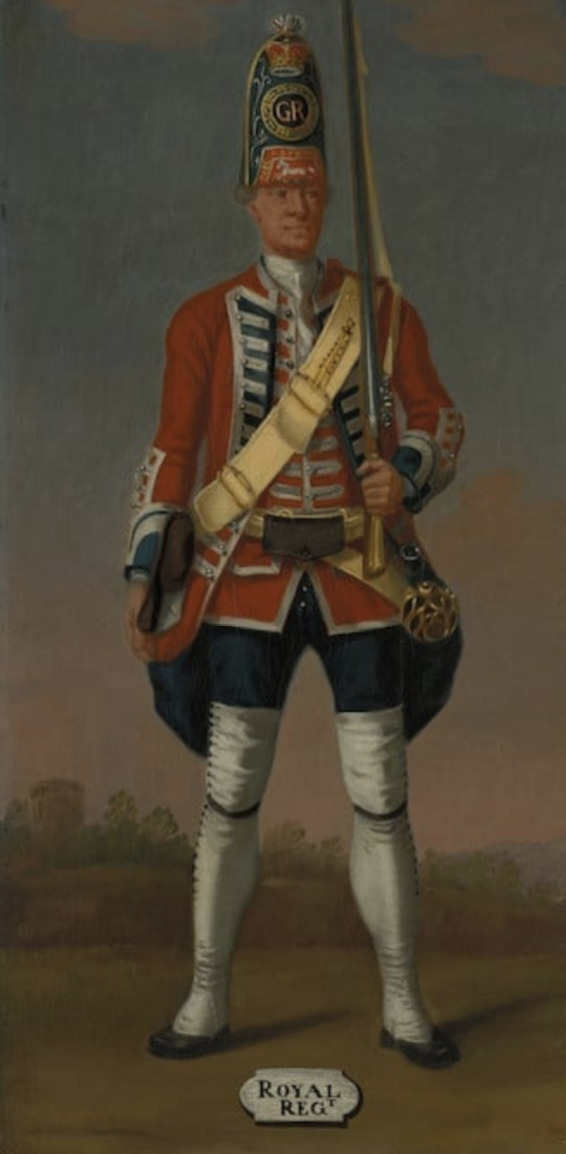
Comparing the two, we see some changes in the silhouette and the smallclothes (in 1751 the breeches change to be blue instead of red), but nothing too drastic. I for one hadn’t realized that the Royal Scots would have been wearing red smallclothes during the mid century, as opposed to the white or buff. The one thing which does confuse me is the lack of lacing on the cuffs in 1742. Take this example, from the same collection, of a soldier from the 34th Regiment—notice the split cuffs and their elaborate lacing.
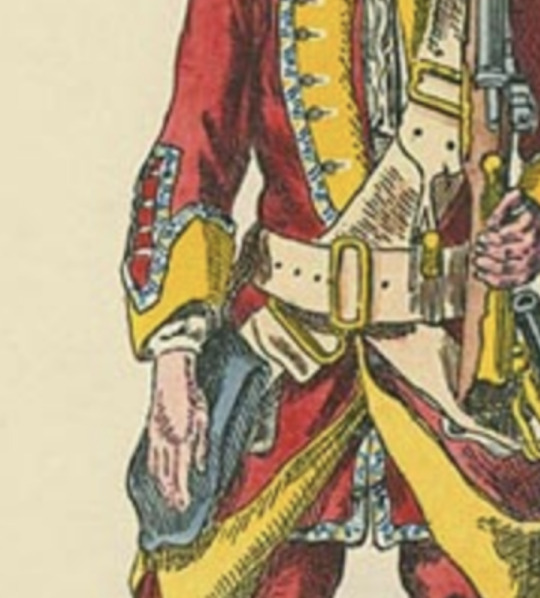
The artist seems to have been very deliberate in his depiction of the 1st’s uniform to include full cuffs without that extra lacing. Unfortunately I can’t seem to corroborate whether this was intentional or not, but my best guess is that it might have been a deliberate sign of the 1st Royals’ seniority: most regiments (like the 34th seen here) wore their own specific patterned lace, but the Royal Scots (at least during the mid 18th century) specifically wore plain white lace as a nod to the fact that they were the first and oldest regiment established in the British Army. It seems not impossible that this simpler cuff design might have been intended to convey the same sentiment. However, I can‘t say for sure whether this was the cuff in use during 1745, unfortunately. I would lean more toward the 1742 uniform for Keith’s just because it’s closer time-wise, but given that new uniforms were issued every year, it’s impossible to truly know how similar it would have been.
All that being said, it is important to acknowledge that we have been discussing regular soldiers up until this point: our Major Windham’s uniform would have borne some distinctions. This is a modern (so once again, speculative) illustration of an officer of the 7th Dragoon Guards in 1745, who, while not being an infantry soldier, would still have had a comparable uniform at the officers’ level, and provides a pretty good example of what some of these officers' distinctions might have looked like.
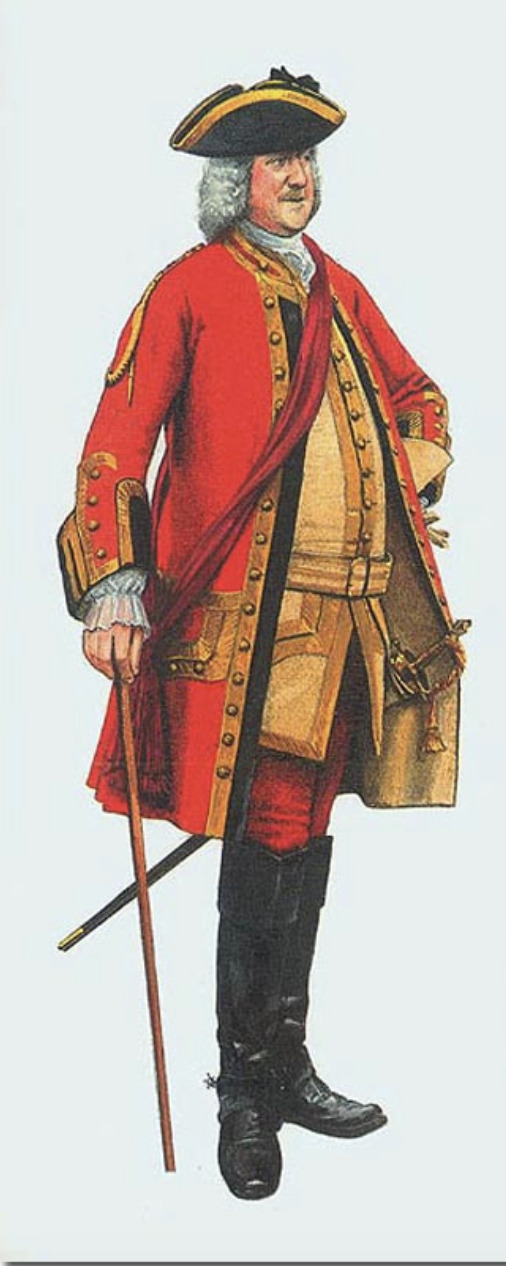
With regard to lace, officers’ uniforms of the 1st Royals were faced with gold lace as opposed to white, including on the hat. As mentioned before, as an officer, Keith would have been wearing a cocked hat with a black cockade on the left side, unlike the grenadier in the previous painting. While on duty, it seems likely that he would have worn a gilt gorget, though in a broader kind of half-moon shape than would be seen at the end of the century, and a sash, over his shoulder and the rest of his uniform rather than around his waist. He also would not have worn the crossbelts we see the regular soldiers wearing, and instead probably only a waist belt to hold his sword. Another important distinction would have been the gold aiguillette, a decorative knot to denote rank, rather than an epaulette like we see in the later century, on his right soldier, like the one on the dragoon officer’s shoulder here. An interesting but subtle detail would have been the fact that officers’ coats generally did not have the turned-back skirts associated with regular soldiers; the idea was that those soldiers would be moving around a lot more than the officers and therefore would need the extra room.
Another thing not specific to being an officer, but simply which differs from the paintings here, is that while on duty all soldiers (officers included) would have been wearing black gaiters, and not white. While, in my opinion, they do look fantastic (especially the full length mid century ones, unlike the late century half-gaiters…), white gaiters were reserved for parade because of how easily they could get dirty. While I’m here I suppose it’s worth listing off a couple general period details I often tend to forget about the mid-18th century, as someone who mentally lives in the 1770s: for one thing, military cocked hats were almost always worn slightly off to the side with the “point” angled over the left eye (you can kind of see it in the 1742 depiction). This was so that men could shoulder their firelocks without knocking their hats right off their head, and it became so much of a fashion that not only were officers (who were not bearing muskets) doing it, too, but also some civilians (and this lasted for a long time, pretty much until the army stopped wearing cocked hats). Also, it didn’t occur to me until recently that cravats were much more in fashion than stocks were during this period, and would have been tucked into a waistcoat that might have been even nearly half unbuttoned from the top, as was the fashion at the time.
But now I’m just rambling. I had fun learning about this and if someone else learns from it too, that’s just a bonus to me. Again, I'm not an expert; this is in no way meant to “correct” any of the depictions of Keith I’ve seen, or come off at all as being in bad faith. Almost everything I’ve said in this post is stuff I wasn't sure of myself until looking into, because this kind of thing is hard to know! As I said, most of the Keiths I see actually seem very well-researched and faithfully depicted. I just happen to love uniforms, and this man happens to have one (and a very good one at that). I would lean most heavily toward the 1742 version for Keith’s canon uniform if only because it’s closer in time to anything else we have, but who can really say what it looked like in real life? Some part of me is saddened to know we’ll likely never know, but thus is history. Hopefully knowing all this I’ll be able to do it some justice.
#wooooof.... long post#at some point hopefully i'll just like. draw it. but not today it's 2am#really interesting to look into though#one thing about me is I Love Uniforms#anyway#18thc#uniforms#flight of the heron#the flight of the heron#foth#keith windham#reference#jacobite rising#long post#redcoatposting#this is your captain speaking#haul up your queuegarnets#the captain's lectures
27 notes
·
View notes
Note
So in the drone au, you mentioned the drones always seeming to know when someone tries to leave the city.
is it a instinctual thing or do they have like tech there? It peaked my interest on a reread
Instinctual thing. Plus having the S-Tier Drones (scouts and foot soldiers) relaying what they see to the hivemind, until it passes to the queens/monarchs.
Thank you for asking your question! Feel free to ask more!
(Bonus:
The different tiers have different designs. Any that are below/aren't M-Tier and P-Tier are faceless/their faxes aren't visible. M-Tier and P-Tier have their faces visible, and have special patterns/colors to their drone skin to show their status in the brood hierarchy. From the neck/collarbone down, the drone skin is a mix of an alien/foreign substance, that fused with their original skin, making it stronger, more durable, and harder to cut. (And no, nothing is visible down below. They don't have a use for privates, so they basically... don't have any anymore? Drones absorb everything they successfully digest, and with their new skin, it converts whatever nutrients and minerals it absorbs from its person, and since their bodies now digest whatever is digestable... They don't have to use the bathroom). An example of how the drones would look follows:
S-Tier: Faceless, smooth, and with gray bands over their shoulders. If they are a servant, they have a white stripe between two gray bands. If they are a scout, they have a green stripe between two gray bands. Finally, if they are a soldier, they will have a red stripe between two gray bands. (Three bands to each shoulder, the other color is between the gray ones)
R-Tier: Faceless, but have shoulder pads tipped with their designation color, as well as being equipped with a weapon (such as a spear/staff, whip, or dart gun). Guards would have orange tips, while enforcers would have brown tips, as well as a stripe around their arms.
Q-Tier: Faceless, but have more patterns to them. Purple bands wrap around their lower legs and arms, with an almost "eye" on their face/mask. They usually have clipboards, as well as at least two guards with them at all times
M-Tier: Their faces are shown, and their skin/form is slightly iridescent (the drone skin part). Almost with a hidden pattern, it has black, orange, and gold in ombres, as well as a symbol, a bright golden-orange hexagon. They can also have a chosen color as added highlights, or a pattern reminiscent of their old costume/suit or regular clothes/outfit
P-Tier: Same as the M-Tier, but where they have orange and gold, P-Tier has pink, as it represents the color of love and adoration. They have a heart symbol where an M-Tier would have a hexagon. They don't have an ombre look, but do have bee-like stripes of pink around their arms and legs, and a V-shaped band underneath the heart symbol)
(I hope this helps!)
#honeycomb thoughts#🧪brood🐝 au#platonic yandere marvel#platonic yandere xmen#yandere platonic marvel
7 notes
·
View notes
Text

Tankiste at the Barracks and Work Detail
This is an impression of a French tank crewman at the barracks and on work detail. One may see this uniform on tankiste at rest in the barracks (left photo) or when performing work detail (right photo).
The left main photo depicts a soldier who is either just waking up or getting ready to sleep in the barracks. Soldiers were issued two Régulation Undershirt Modèle 1878 and one underdrawers as the undershirt was considered the main piece of clothing that would have to be cleaned frequently. Two pairs of socks were issued for the same reason. The socks would be placed over the underdrawers, and the underdrawers placed over the undershirt. Over all of this was a flannel waist wrap, this variant being a basic Red Cross accepted item. On his head he wears a wool sleeping cap. It was still believed by many at the time that sleeping without a head cover would lead to illness. This version is a private purchase knitted example as the regulation cotton version ceased distribution in 1908.
The undergarments were either pin-striped in red, black, or blue, blue checkered, or plain white. The regulation undershirt was closed with three bone or porcelain buttons and the underdrawers closed with two. Red Cross accepted undergarments may have slight variations from this standard. The shirt had tails on both the front and back, to be tucked into the underdrawers as previously stated.
Over his shoulder is a standard issue towel for washing oneself. On his feet are a pair of wooden clogs, often worn when not wearing the standard issue boots or rest shoes. He is also holding a wooden barracks box or footlocker. These remained in the barracks and acted as the footlocker for the soldier's belongings.
The right main photo depicts a tankiste performing the daily chores. The daily chores was of course what can be normally expected when maintaining a living space: cleaning clothes, cleaning dishes, staying hygienic, and cleaning the barracks or encampment, as well as general upkeep of weapons, uniform, and camp. For the tankiste this also included maintaining their vehicles to battle ready status. It was permitted to wear the undershirt exposed when performing work duties as they were often performed behind the lines, though tankiste would sometimes opt to wear their black leather coats when working with the tanks to prevent nasty vehicle stains. The undershirt would act as the main garment if it was particularly hot that day and if it was permitted by the officers. It was instructed to wear the dark blue flat knot tie despite not wearing the tunic, though this was not always followed. The breeches are secured by Bretelles Modèle 1879, which were a double piece regulation suspender. It was common for soldiers to ditch the double piece regulation suspenders for a civilian single piece example that crossed at the back which provided better security.
Displayed here is the Boîte De Paquetage De Casernement (Barracks Box) and assorted clothing cleaning equipment. Cleaning equipment was placed inside the Sac de Petit Monture (Small Kit Bag). This bag included the Martinet (Clothes Whip), Brosse à Habits (Clothes Brush), Brosse Doubles (Boot Brush), and Button Polish Stick. Beside these are two handkerchiefs provided by the French Red Cross and the standard issue towel and soap. Various patterns of handkerchief would be seen as they were made from scrap material usually in a flannel pattern and provided by the French Red Cross. Red Cross variants were permitted to be used in place of the regulation handkerchiefs. The regulation Seau en Toile (Canvas Bucket) can be seen in the background. This was a compact water container that was used for chores and temporary water carrying.
Also depicted here are two pairs of Brodequins Modèle 1912 modifié 1916. The 1916 modification retained the 1915 modifications of increased waterproofing on the basic 1912 model and added a rivet placed at the joining point of the upper part of the boot for reinforcement. These boots were steel hobnailed which give decent traction on rough ground. Conversely, they perform poorly on smooth ground like the polished concrete of a museum, which is often the cause of very funny slippage moments. They were sometimes issued in their natural color and soldiers were required to blacken and polish the boots themselves. The double sided boot brush as well as the double sided grease tin were provided for this task. Boot polish was placed in one side of the double sided grease tin (the other side being gun oil). The longer bristle side of the brush was for removing dust while the short bristle side of the brush was for removing dried mud and polishing the boot. Soldiers were required to upkeep the polish on their boots despite how dirty they could get in the trenches. On the left example we can see where the Bandes Molletières Modèle 1915, or puttees, would overlap on the boot as denoted by the upper portion of the boot having no dirt on it. Standard lacing pattern was a ladder lace, pictured here. Cross lacing existed however it was very uncommon within the French Army during this period.
#history#tanks#renault ft#technology#world war one#reenactor#uniforms#reenacting#reenactment#reenactors
3 notes
·
View notes
Text

THE CANTERVILLE LEXICON 2 More verbiage from Canterville:
CAIT SIDHE – See “Cawtshee”
CAWTSHEE – This is the Canterville pronunciation of “Cait Sidhe”, the Scottish Fairy Cat. In the established legends, the Cawtshee is somewhat larger than ordinary house cats, all black save for a white blaze of fur on their chests. This could not be further from the truth. It is claimed that it was the cait sidhe who established that legend to keep them safe in public. Sadly, it has caused problems for ordinary black cats ever since. Cawtshee have all styles of fur colors and patterns; in fact, the Cawtshee who is the current “guardian” of The Wayside arrived looking like the classic “Tuxedo Cat”. It was soon evident that Talisker had unique magical properties to her fur patterns – while the base was always white, the black patches tend to shift around, so that she never looks the same from one moment to the next. (Timjimmy Auxberon calls her a “feline lava lamp”.)
It is not clear how powerful their magic is, but they do display a high level of intelligence, and on rare occasions, they can thought-cast… but only to a select few.
FIRBOLGS – In the early mythos of Ireland, the Firbolgs were descended from an early group of settlers on the Emerald Isle but who were driven off, only to return. If you read the account as described in Wikipedia, you will find all of the groups mentioned – especially the Firbolgs and the Tuatha de Dannan, are treated as being early humans. But the historians and folklorists in Canterville and the Flatlands argue that this was an attempt, mostly a successful one, by the fervent missionaries of the early Christian faith to erase the presence of magic in the world. They were unable to eradicate its power, but they drove it deep into the shadows.
In the account shared by the Firbolg descendants, they were basically humanoid, with the difference of having six inch tails. (Somehow Cromwell knew this and used it as a propaganda weapon to get his soldiers to massacre a million Irishmen.) Once they were driven out of Ireland, some traveled northwards to Scandinavia, while most sailed into the West and established colonies along the entire length of the Eastern seaboard. (There were three underground realms in Connecticut alone.) There are theories that the “evil sheep” mentioned in British Columbia folklore were Firbolgs… and they were a tribe who had gone bad….
THE HAYS CODE – In some isolated communities, cut off from the outside world, the people who lived there created a form of language to further separate them from outsiders. The best example of that would be Boontling, the artificial argot from Boonville, California. It first came into play at the turn of the 20th Century, but only about 100 people still speak it today.
The other-dimensional village of Canterville also developed their own private lingo which is known as “the Hays Code” (because it originated when the hidden village was known as Haysville.) Its source of inspiration is people’s names, first from those among their neighbors and then from the outside world, such as presidents and other newsmakers. With the advent of vaudeville leading into silent movies, talkies, television, and now online content including influencers, the Hays Code has burgeoned into a healthy folk lingua. However, old-timers, who see the Hays Code as something to be enshrined with no expansion, are dismissive of a trend which began with the advent of movies but which has blossomed with the dominance of television in their homes. It is becoming more frequent that the name of a character is being employed rather than the name of the actor. However, there are others who argue that the actor could be associated with any number of roles which might lead to the coinage of a new Hays Code word, but a character’s name narrows down the reasons for it.
HAYSVILLE – This was the name by which Canterville was known once the Notchfolk finally accepted that the Fort Kathlyn farmlands would never be reunited with the other half of the Fort Kathlyn settlement, one way or the other. It remained Haysville for 158 years; that’s when Canterville adopted their current name in 1949, thanks to a campaign by “The Children’s Crusade”. Before then, the Fort Kathlyn farmlands bore the name of Haysville in dedication to a colonial man from one of their Earthbound neighboring towns, a man who had led an adventurous life. The town's name was changed when the children in 1949 pointed out that the adventurous life led by that settler named Hays was also a problematic, politically incorrect, one.)
M’GAFFIN – A word in the Hays Code which is based on an actor, but was inspired by one specific character. A m’gaffin is what the Notchfolk call a stranger in their midst. I should know; that epithet was bandied often when I first started hanging out at The Wayside. The name is a corruption of “McGavin”, as in Darren McGavin, who played the lead role in an old TV series entitled “The Outsider”.
NEMED - In some accounts of Irish “history”/legend, Nemed was the leader of the third group of people to colonize Ireland, the Muintir Nemid. (That translates to “the people of Nemed”.) But what those 11th Century accounts, heavily influenced by the Church, did not want the people to remember is that “the people of Nemed” meant that the Firbolgs had arrived in Inisfail via a portal from another dimension – the world of Nemed. Those Nemedians took the name “Firbolg” which means “Men of Bags”. At Pooticuck University in Acton, Pooticuck County, the Flatlands, many papers have been written as to why they chose that name. The most popular theory is because Merlin Ambrosius was their protector and he would later be known among the Kaska Dena peoples of British Columbia as “Wḗdé gwę̄́ł gégeh” – “He was always packing a bag around.” The late Killian Vellinge, once Timjimmy Auxberon’s roommate and companion, wrote his paper on Tolkien drawing upon the Firbolgs in his visualization of the world in which the Hobbits lived – Bag End, Bagshot Row, the surname of Baggins. But J.R.R.’s Hobbits were not influenced in their look by the Firbolgs. The Hobbits, on average, were about three feet tall and they wore no shoes as they had very hairy feet with thick leathery soles; the Firbolgs were about the same height as humans and they sported six inch tails. (Killian could attest to that if pressed on the matter, as he had been one himself.) But he advocated that theory when he was sweet on a fellow student at PU whose family had built their lives around an adoration of Tolkien. This was back when he was still struggling with his own sexual identity….
While the Firbolgs in several of their splinter groups, like the Wonnix who once lived in Connecticut, have carried on the scientific knowledge of teleportation jump-points, with the use of thauma-doors throughout the world, none have any memory of the coordinates back to the Nemed dimension.
THOUGHT-CASTING – The mental projection of “cerebral speech”, the ability to converse via telepathy. It is employed by Talisker, the Cawtshee assigned to The Wayside by some Power That Is, and by Ratatoskr, the former god-like squirrel who once served as the messenger of the gods in Asgard… before Ragnarok wiped them all out. (Both of them thought-cast because their mouths are not shaped for vocalizing human speech.)
#canterville#connecticut#quirky#small town life#notchfolk#history#mythical creatures#language#myths and legends#other dimensions
0 notes
Text
Oh come now, it's not kooky— Fly pendants were medals of valour in ancient Egypt because biting flies are FIERCE.
However, this is a jar, not a pendant, which rouses my curiosity, as do some of its features. I've got a hunch what this was used for... and believe it or not, I managed to tie it to a now-ancient Tumblr meme! 😝
(Disclaimer: Dammit, Jim, I'm a Classics M.A., not an Egyptologist. I was going to be an Egyptologist, but I got distracted. @rudjedet feel free to poke holes in my not-entirely-serious putterings below.)
OK. First of all, I tracked down this fly "juglet" in the Pelizaeus Museum collection.
Provenance unknown 😡 but dated to the 2nd Intermediate Period or immediately after, ie when the chariot-riding Hyksos conquered and ruled Egypt as the 15th-17th dynasties from c. 1650-1550. Latest possible date during reign of Amenhotep I, whose dad founded the 18th dynasty and threw the Hyksos out.
Much of the Hyksos-smiting was actually done by his badass grandma:

Remarkably, the most stunning example of gold fly pendants [above] were found in the tomb of Queen Ahhotep at Dra Abu el-Naga, in the Theban necropolis. Ahhotep’s burial contained three gold flies, large and striking, as well as two silver flies with gold heads. Their presence in a queen’s burial indicates the significant role she played as queen regent during the struggle against the Hyksos, especially when viewed with the other military objects found in her tomb: a dagger and a gold battle-axe. […]
The ancient Egyptians likely adopted the fly as a symbol of military prowess from their southern neighbors, the Kerma Culture, whose kingdom encompassed over two hundred miles of modern-day Sudan. Large fly pendants of ivory and bronze have been found at Buhen, Qai, and Kerma belonging to Kerma ‘warrior’ burials – burials in which the owner also possessed a sword, dagger, or other weapon, indicating a soldiering career.
The fly motif existed in Egypt even before the Old Kingdom, but it is not until after the Middle Kingdom and Second Intermediate Period (corresponding to the Classic Kerma Period) that fly pendants were instated as royal rewards for military achievements in Egypt. The Nilotic fly, a symbol of undaunted persistence and unwavering resolve in one Nile Valley culture, became a symbolic object of royal favor in another.
"The Symbolism of the Fly in Ancient Egypt" — great blog post by Taylor Bryanne Woodcock, Egyptology PhD candidate at University of Toronto.
That blog post includes photos of several fly pendants/beads, including this 18th dynasty necklace of gold and carnelian fly pendants which have the same kind of crosshatching on the wings as the clay jug.
Its museum catalogue entry classifies the fly jug as "Tell el-Jahudiya ware," or, as the British Museum calls it, "Tell el-Yahudiyeh Ware has a fabric of grey or light brown clay which has been slipped and burnished. It has a distinctive incised decoration of geometric patterns, usually filled with a white paste. Most of this ware was in the form of juglets, although small zoomorphic [animal-shaped] vessels were also made."
This kind of pottery was found from the Levant (the Hyksos' home turf) to Egypt from about 1750-1550 BC. There's some debate whether it originated in the former or the latter.
While the burnishing, incision, and shaping make it fancier than the most lower-class pottery, clay doesn't have quite the cachet of gold,faience, or stone. (The hands are also a little odd. I don't know whether that's a foreign element or the greater variability of folk art.)
That gives us a hint about its owner, but what does it mean?
As Woodcock's blog post and this writeup for an exhibition at University College London notes, ancient Egyptians used the symbolism of dangerous animals to enlist their aid, to take on their powers metaphorically, and to fend off their attacks:
Take the humble fly for example: the fly symbol was used at the end of the ancient Egyptian word for the insect itself, and to mean ‘to fly’. Flies were also worn as protective amulets as well as symbolising persistence: soldiers were awarded golden flies by the pharaoh as reward for heroic efforts in battle. In addition to symbolising persistence, ancient Egyptians also believed that wearing fly beads and amulets would protect them against disease – they took the dangerous aspect of the fly’s behaviour to cause disease, and used it instead as a protective mechanism.
[word for fly is "af"]
OK. This little jug is about 5cm in diameter. I was going to suggest it was a kohl (eyeliner) container, used by a soldier to apply greasepaint while arming for battle. However, kohl is usually stored in stone jars, and most of them have wide mouths. It's shaped more like a perfume or oil bottle.
Maybe it held bug salve for a soldier. Or... maaaybe...
Queen Ahhotep (last ruler of the 17th dynasty) rallied the troops, defended the capital of Thebes, and was described as a uniter of Egypt in the texts left by her son Ahmose, founder of the 18th dynasty, for whom she was regent for many years.
18th dynasty pharaohs began the tradition of handing out fly pendants as medals of honor. Is her fly pendant necklace the first Egyptian example of fly-symbolism used to indicate valor instead of just as warding/protection magic?
Was the fly originally a symbol of the queen herself, perhaps after being unwisely dismissed by her enemies as a mere insect?
Did people rallying to the queen's army make flies as symbol of defiance against and unity against the Hyksos?
Did Queen Aahotep herself hand out fly-themed gifts to her followers?
Was this an ointment jar for one of her attendants?
Obviously, I have strayed away from what the object and archaeology can tell us into pure speculation, but here's what I'm getting at:
Maybe it didn't belong to a warrior, but a handmaiden.
Or... MAYBE... considering the times... its owner was both.:)
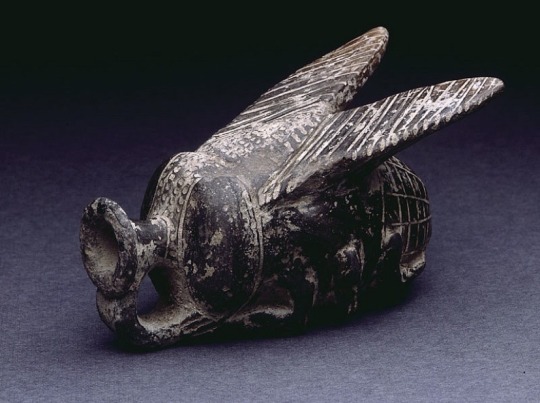
A kooky fly-shaped clay vessel (15th Dynasty)
With its realistic representation of a fly, it includes large eyes, wings, and legs that resemble hands
9K notes
·
View notes
Text
BOTT Price Action Guide: Binary Options Turbo Trading, Forex, FX Options, Digital Options BOTT Price Action Guide: Binary Options Turbo Trading, Forex, FX Options, Digital OptionsThe ultimative Price Action guide (7 edition) for any kind of financial instrument (Binary Options, Forex, FX Options, Digital Options) any kind of time frame from 1 min over 5 min up to 15 min, 30 min and above and any kind of broker. This ebook is all you need, especially as a binary option turbo trader or Forex day trader to get profit out of the market, to get out of debt, make yourself a living or help your friends and family and to archieve financial freedom. Don't miss the opportunity to get this ultimative Price Action guide (7 edition)File Size: 12597 KBPrint Length: 118 pagesPublisher: BO Turbo Trader; 7 edition (October 24, 2018)Publication Date: October 24, 2018Content:Mindset for consistent profits- Practice- Win Rate- Discipline- Money Management- Emotions Candlestick Patterns- Hammer, Inverted Hammer, Takuri Line, Shooting Star and Hanging man- Dragonfly Doji, Gravestone Doji- spinning top - long-legged doji, high wave and rickshaw man- Pinbar - Pin Bar - Pinocchio bar or Kangaroo Tail - Tweezer Top and Tweezer Bottom- bearish harami, bullish harami and bullish harami cross and bearish harami cross- three inside down, three inside up- descending hawk and homing pigeon- bearish meeting line - counterattack line and bullish meeting line- bearish belt hold - black opening shaven head - black opening marubozu- bullish belt hold - white opening shaven bottom - white opening marubozu- bearish kicker signal - bullish kicker signal- matching high and matching low- bearish stick sandwich and bullish stick sandwich - bearish breakaway and bullish breakaway- ladder top and ladder bottom - tower top and tower bottom- three stars in the north and three stars in the south- bearish sash pattern and bullish sash pattern- engulfing candlestick pattern or the big shadow pattern- (bearish) dark cloud cover and (bullish) piercing line- Breakaway gap, exhaustion gab, continuation gap and common gaps- rising window and falling window- marubozu and big belt- inside bar and mother bar- evening star, morning star and evening doji star and morning doji star- three white soldiers and three black crowsChart Patterns- Double Top - M Formation - Mammies and Double Bottom - W Formation - Wollahs- J-Hook pattern and inverted J-Hook candlestick pattern- bearish last kiss - bearish pullback and bullish last kiss and bullish breakout- Head and Shoulders and inverted Head and Shoulders Pattern- Trend Channel - uptrend and downtrend- symmetrical triangle- ascending triangle and descending triangle- bullish flag and bearish flag - bullish pennant and bearish pennant - rising wedge and falling wedge- Broadening Bottoms and Broadening Tops- Rectangle Bottoms and Rectangle TopsConcepts- Candlestick Mathematics- Rejection - market move - weak snr and strong snr- trending and ranging market- minor and major trend- adapting forex strategies to binary options turbo trading- proper rejection - invalid rejection- false breakouts - channel breakouts- reversal and retracements- highest probability trading setups- high probability techniques- market pressures and types of market pressures- upper shadow and lower wick or tail- advanced candlestick charting techniques- overbought and oversold - oscilator - RSI CCI Stochastic Oscilator- different market conditions and market conditions examples- cycle of market emotions, psychology and dynamics- trading setups without rejections as confirmation - multiple time frame trading concept, system, methology and strategy- candlestick momenting- direction of candlestick momentum- inside swing and outside swing- support and resistance - minor snr and major snr and much more concepts ... Also by the same author: BOTT Mentorship Self-Study Video Pack 1-4 BOTT Price Action Indicator BOTT Price Action Bible by BO Turbo Trader
0 notes
Text
35 Powerful Candlestick Patterns
As you step in the world of forex, there is an essential indicator that traders should know. With our 35 powerful candlestick pattern guide, it can enhance you to make effective decision while trading.
Here are examples of powerful candlestick patterns:
Hammer The hammer is an important candlestick shape often seen when prices are falling. It looks like a hammer with a small top and a long lower stick. This happens when sellers bring the price down, but strong buying forces push it back up to close almost where it started. This leaves a candle that has a small body and a long bottom stick, which makes it look like a “hammer.”
Bullish Engulfing Bar The bullish engulfing bar is a key pattern with two candles, usually appearing when a downtrend is about to end. It starts with a smaller candle showing a drop in price, followed by a bigger candle that fully covers the first one from its opening to closing prices.
Piercing Pattern The piercing pattern is a sign that prices might start going up, usually showing up when they’ve been falling. It has two candles: the first one shows a drop in prices and is followed by one that starts even lower but goes up past the middle of the first candle.
Three White Soldiers The three white soldiers is a pattern of three long candles going up in price, often seen as a strong clue that a downward trend could be flipping. Each of these candles starts within the last one and ends almost at its highest point, with little or no upper stick.
Three Inside Up The three inside up is a pattern of three candles that often hints at prices moving up. It’s seen as a strong clue that the market could be shifting in a positive direction. Here’s how to spot it:
First Candle: This is a long downward candle that usually comes at the end of a period where prices have been falling. It’s like the opening act for a possible change in direction.
Second Candle: This is an upward candle that starts lower than where the first one ended and closes within the first candle. It suggests a turn might be coming but doesn’t confirm it.
Third Candle: This last upward candle starts and ends above the second one, sealing the deal on the upward trend.
6. White Marubozu The White Marubozu is a single candle pattern that’s seen as a strong hint that prices will keep going up. Here’s what you should look for in this pattern:
Color: The candle is green, which means the price ended up higher than where it started.
No Upper or Lower Shadow: Unlike most candles that have either a higher or lower tail, this one doesn’t have any. Both the high and low prices are the same as the start and end prices.
7. Bullish Harami The Bullish Harami is a two-candle pattern that might signal a change from a falling market to a rising one. The first candle is a big one that shows a drop in price, and the second, smaller one shows an increase.
8. Inverted Hammer The inverted hammer is a single-candle pattern that often shows up when a market is going down but could be about to go up. This candle has a small body at the bottom and a long upper wick, with almost no wick at the bottom.
9. Tweezer Bottom The tweezer bottom is a pattern you might see when the market is going down but could be getting ready to go up. It shows up as two candles that line up perfectly at their lowest points. The first candle is generally going down, following the current market trend. The second candle is going up, hinting that things might be about to change.
10. Three Outside Up The three outside up is a pattern that suggests the market might be about to go up. It shows up as three candles on a chart. It consists of three candles:
First Candle: A bearish candle in a prevailing downtrend.
Second Candle: A bullish candle that completely engulfs the first one, signifying that buyers are starting to take control.
Third Candle: Another bullish candle that closes higher than the second, confirming the bullish momentum.
Find more details: Finxpdx
Download PDF file: Candlestick Patterns

#investing#finance#investment#financial#forex#forextrading#forex market#candlestick#candlesticks pattern
0 notes
Text
I suggest starting with the January 6 commission, headed by a Republican, which examined the evidence and relied heavily on testimony from Republicans and military officials reporting what Trump did and said to incite the first attack on the Capitol since the War of 1812, with the purpose of stopping Congress from certifying the 2020 election results despite Trump having lost all court cases claiming fraud/irregularities and his own advisors having told him he'd lost.
Trump is the first presidential candidate in the modern era to refuse to concede, despite far more uncertain election results in the past.
Uniquely in the history of the US but not in authoritarian countries whose dictators Trump praises and whose flattery he values, Trump has repeatedly threatened to jail political opponents despite his allies seeking but finding no crimes to charge them with.
The head of the Pentagon said Trump wanted the National Guard to shoot protestors.
Trump has threatened to terminate the Constitution he swore to uphold.
Two days ago Trump also vowed to jail "donors" to his opponents, ie millions of ordinary Americans whose grassroots crowdfunding gave the Harris campaign a huge advantage over Trump's:
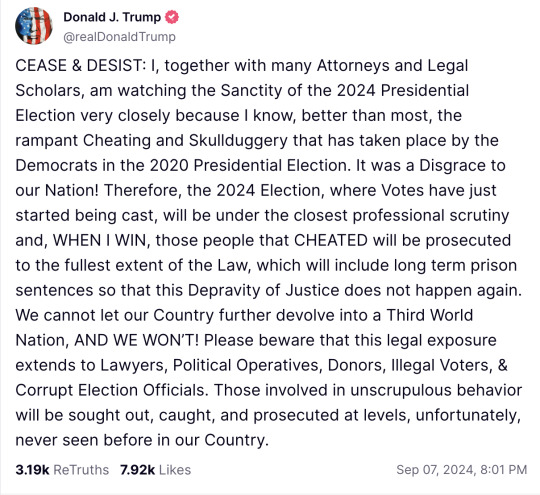
basically repeating his pattern of doing anything illegal up to summoning an armed mob to storm the capitol to shore up his power and intimidate/threaten/punish anyone who opposes him.
And now he has three handpicked Supreme Court Justices who granted him immunity for breaking the law. Who is naive enough to think he won't, when he breaks laws all the time and usually gets away with it? (For example, the Arlington cemetery stunt, which would have been a campaign-ending scandal before 2016. Trump has normalized SO many things that aren't normal.)
"I could stand in the middle of Fifth Avenue and shoot somebody, and I wouldn't lose any voters, OK?" Trump remarked at a campaign stop at Dordt College in Sioux Center, Iowa. "It's, like, incredible." — January 2016
In the following interview, Trump indicates how he'd abuse the power of the presidency in his next term, and he claims a lot of people like the idea of him as a dictator:
Despite his disavowals since it became a political liability, Trump knew about Project 2025, and 140 members of his current and former staff helped write it. Many of its proposals are (or were) summarized as "Project 25" on his website. It is a road map for giving the president dictatorial powers.
This includes using the US military against civilians as he tried to do in his last administration—
—invoking antiquated laws from the Civil War, to wage war against protestors and freedom of speech, deploy the National Guard against the wishes of local governors who normally have that authority, militarize law enforcement, and enact mass deportations (soldiers knocking on the door on the night if you're not white), giving the president military backing for any illegal order for which he now has immunity.
As for why Tump would be a bad candidate in general, the nonpartisan Pew Research Center releases an extensively-linked "How America Changed During X's Presidency" report for each president which is worth reading.
It's clear your brother has absorbed a lot of misinformation, if he thinks the Biden-Harris administration has done a "shitty job".

"Put another way, about 81% of the prime working-age population (ages 25–54) has a job, the highest such ratio since 2001. At least some of that is a direct result of government industrial policy, including [Biden's] CHIPS Act, the Infrastructure Investment and Jobs Act and the Inflation Reduction Act, for which Harris cast the tie-breaking Senate vote." —Bloomberg



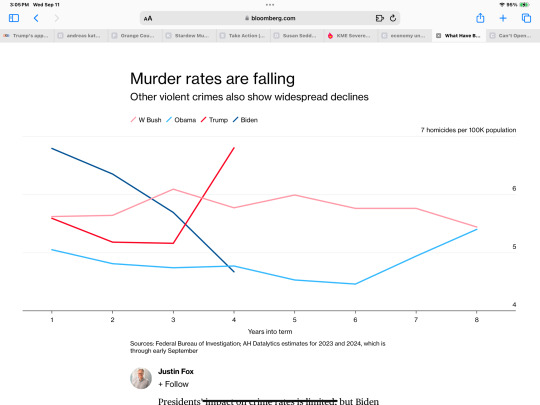



Source: "What Have Biden and Harris Accomplished? Look at These 10 Metrics: Bloomberg"
Biden's CHIPS and Science Act brought microchip manufacturing and jobs back to the US to close a major security and supply vulnerability, which hit our car industry surprisingly hard during COVID: China was supplying the microchips that underpin our modern world from vehicles and phones to military hardware, farm equipment, internet servers, and computer-reliant buildings like stadiums and transportation systems. Now we have American factories creating those chips. "The U.S. is expected to manufacture nearly 30 percent of the world’s leading-edge chips by 2032 – up from zero percent when President Biden and Vice President Harris took office."
The Bipartisan Infrastructure Investment and Jobs Act is more revolutionary than most of you young'uns realize — only Joe Biden, with decades in Congress, could peddle personal relationships to push Republicans into setting political considerations aside for such a sweeping and comprehensive bill. Here's a two-year analysis of some of the things it accomplished so far. (I'm writing this in a city of over 300K people that's switched to renewable energy with a little help from the Infrastructure Act.)
Similarly, despite NO gun control being a pillar of the Republican party, Biden pushed through the first new gun safety legislation in 30 years.
He reauthorized the important Violence Against Women Act reauthorized which Trump had let expire.
He reinstated all the protections for LGBTQ people which the Trump administration rolled back and instituted new ones to prevent some of Trump's anti-LGBTQ agenda (again, see that link).
Having Medicare negotiate with for-profit drug companies to lower prescription prices. Ten more were announced two weeks ago. After decades of people saying it's a shame and Somebody Ought to Do Something, Biden and/or Harris did.. (Talk about the art of the deal).
The US economy is one of the strongest in the world right now (the best, according to some economists), we've been far more successful than most countries in turning things around since the acute phase of the pandemic:
What did Trump get done?
Tax breaks for billionaires and corporations (see charts above), running up a recordbreaking national debt so much that the Democrat who follows gets criticized if they try to spend anything on regular Americans, as is traditional for Republican presidencies.
Release of the Taliban's terrorist fighters, caving into the flattery of Taliban leadership who had assisted with 9/11 while shutting out the legally-elected Afghan government, agreeing to withdraw US forces so that by the time Biden took office, there were only 2500 very vulnerable US soldiers left, half the number of enemy fighters Trump had released.
Appointing three Supreme Court Justices to overturn Roe v Wade.
Remove thousands of environmental, consumer, worker, and other protections, resulting in countless American deaths, not simply tied to his terrible handling of the COVID pandemic after throwing out Bush and Obama's pandemic plan and taskforce.
Scrub any mention of LGBTQ rights from the White House website the day he was inaugurated, and follow up that ominous sign with anti-LGBTQ actions through his first term.
TL;DR: I want you kids to have a better future. I've watched Trump serve himself for over 40 years and get rich off other people. You deserve someone who's had more government experience in serving the American people. While people tend to forget it, a career district attorney, state Attorney General, Senator and Vice President Harris is that person (in fact, she has more years of experience as a public servant than Trump and Vance combined).
Help me find sources of Trump being a bad choice.
My brother is trying to tell me that voting for Haris because I don't like Trump is a stupid reason. He then basically said that "Trump's done the job already meanwhile Haris has basically been doing the job for biden and doing it shittily".
When my mom and I explained to him that Trump is anti-gay and basically wants to be a dictator,, he asked for proof (he's the type who will reexamine himself if given evidence that he's wrong. I've already gotten him softened on trans issues).
All I have is tumblr posts, so if people could help me compile actual sources, that'd be helpful.
40 notes
·
View notes
Text
Ugh. I was reading a very nice post that was talking about the complexities of season 2, and they threw me out with one line:
That Jamie had it “much worse” than Nate.
And they give, as explanation, that Jamie was “beat up by his drunken father all of his life” and asks us “Do you know what that does to a child?”
Jamie tells us his backstory in Two Aces:
He was raised by his mother because his father left when he was a baby. She’s the one who got him into football. His father came back into his life only when Jamie “started getting good at it”.
We don’t know how old Jamie was when he became “good at it”. Probably early to mid-teens because he’s twenty-three at the start of season one. He made it out of a council estate to the Premier League and is very proud of that.
Jamie did not mention his parents reconciling or indicated that his father had custody of him once he came back into his life. Which of course doesn’t mean that he wasn’t abusive. And certainly what we’ve seen indicates that James Tartt could and did get violent. But the extent and frequency is a matter of audience extrapolation: reasonable conclusions drawn from the evidence presented to us, but not something directly stated by the text.
And I think that fandom has a pattern of being willing to extrapolate trauma on behalf of a white character that we like far more than for a character of color that we don’t.
Nate’s father is abusive. We saw how coldly dismissive he was to his son’s genuine triumph. We’ve heard how Nate tries so very hard to please him. Even during his one success: getting the table at a restaurant, his father is still happy to belittle him. We’ve heard how Nate’s father told his girlfriend, when both were NINE, that she could do better.
Hm. Do you know what THAT does to a child?
Now, if we want to extrapolate, we’ve got plenty of ammunition. We can think about what it was like to live your entire life with a man like this. We can imagine to ourselves what discipline is probably like with a home like this. We can imagine how he probably would have reacted if Nate tried to tell him about the bullying and mistreatment that he faced. We can extrapolate a lot.
But I feel like sometimes we’re not as willing to do that. I’m reminded a bit of Star Wars, and how many of the same fans who would discuss Kylo Ren’s abusive and/or neglectful upbringing at the hands of Han and Leia would then make claims that there was no real proof that Finn’s life as a child soldier for the First Order was that bad!
This is thankfully not as over the top as the Star Wars example. But still, it doesn’t take much to acknowledge that BOTH Jamie and Nate are children of abuse and that abuse plays a part in why BOTH characters made some pretty terrible choices and treated other people badly.
And let’s not RANK types of abuse, okay? Rupert abused Rebecca horribly even if he never laid a hand on her. All types of abuse are abuse.
I’m not saying you have to like Nate. Or forgive Nate. I’m not saying that Nate is automatically entitled to redemption (though I think it’s a bit much to pretend he’s worse than many others were at various points of the narrative.)
But you don’t need to pull bullshit like this.
146 notes
·
View notes
Note
Zora headcanons please?
There's so many kinds of Zora; how about I do them all? :D
River Zora
So, the River Zora were the first kind of Zora we were ever met with in the LoZ series.
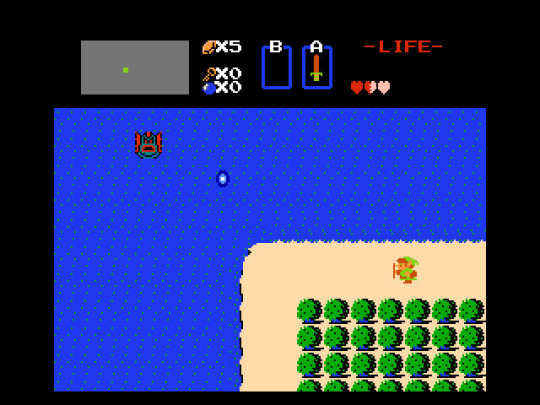
Capable of shooting fireballs, this variant of Zora is EXTREMELY territorial and defensive of their domain. And with good reason; their eggs are a rarity--a River Zora might lay only two eggs in their entire lifetime, which can reach up to 800 years. And monsters, especially water-based monsters, tend to be scavengers, meaning that if a Zora isn’t careful, their nest can be raided and the eggs devoured before they have a chance to react.
The River Zora are vibrantly colored, with the ability to puff up to three times their normal size and possessing side-fins to use as flashy warning signs against potential predators. Living in a place like Hyrule means you have to have all kinds of tricks up your sleeve!
But all that flash isn’t just for show; when they’re stressed, their skin releases a toxic substance that can cause paralysis in nearby enemies.
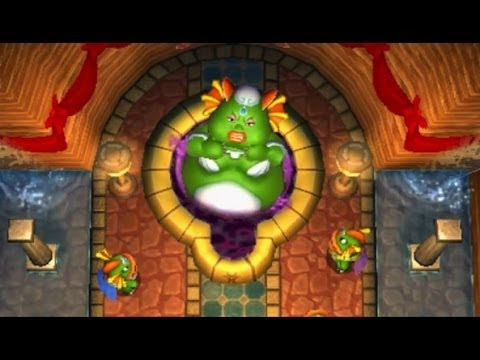
You can see it here in Queen Oren’s fountain, how the water’s gone dark purple (along with the size magnification mentioned previously).
Their mouths contain special glands that secrete a kind of organic napalm. When creating a fireball, they gather some of this substance in their cheeks and ignite it with a spark of electricity, similar to an electric catfish. This ability takes time for them to develop, and fireball accuracy is a point of pride among their soldiers.
Their diet consists of mostly trout, and their domain is hidden in a waterfall beside Death Mountain. However, by BoTW’s time, the River Zora have fled Hyrule for distant Holodrum, where there’s remarkably less threat of extinction.
Zora Warriors
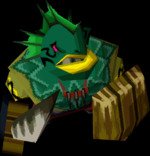
These are actually the result of River Zora adapting to salinity! Also called “Geozards” to differentiate them from their ancestors, these Zora have lost their toxicity and pufferfish-like abilities in exchange for denser muscle mass and near-impenetrable scales. The frill atop their heads is their only biological sex indicator; frill means male, no frill means female, and the sex of a Geozard is determined by the temperature their egg was kept in, like alligators!
They also have an increased capacity for firepower compared to their more docile inland counterparts, an adaptation developed in the presence of more aggressive waterlife out in the open ocean. The napalm they produce is a LOT harder to get off of yourself, so watch out!
Lake Zora
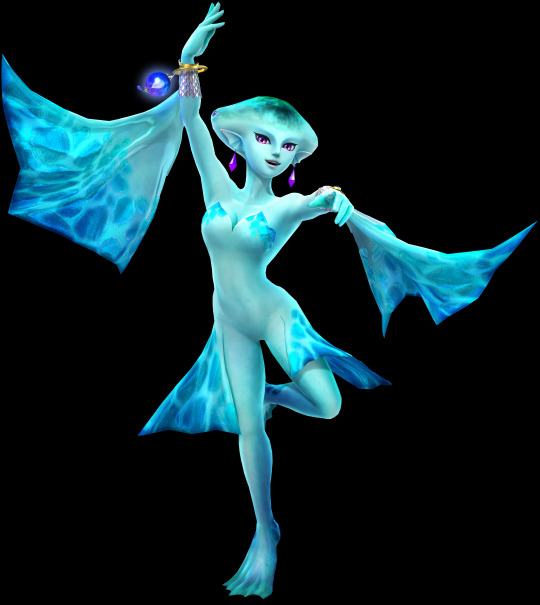
Most famous for their queen, Ruto, Lake Zora are blue-white in coloring and have fins that mimic the patterns clear water would create on the seafloor. Unlike their vibrantly-colored firebreathing cousins, these Zora are stealth hunters, blending in with the water and staying very still before darting out to catch their prey in a split second.
The well-known fondness for jewelry that Zora have started with this subspecies, where earrings, necklaces, and gemstones were first utilized as bait, similar to metallic fishing lures. Since then, the fondness for shiny decoration has only grown, peaking when the Zoroyal family was entrusted with the Spiritual Stone of Water. Since receiving it, the gifting of sapphires between Zora has been a token of engagement, similar to how rings are in our culture.
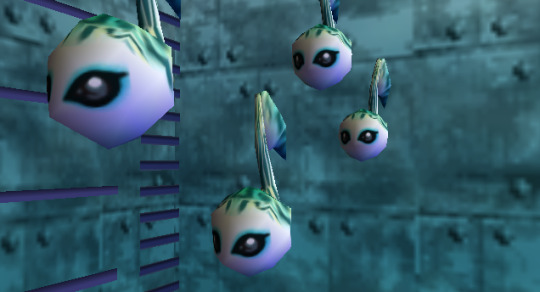
Early stages of Zora life strongly resemble tadpoles; upon hatching, they’re little more than eyes and a sharklike tail. As they mature, however, the rest of their body develops, tucked into the curve beneath their faces, before eventually emerging into a Zora guppy.
Zora guppies are...clumsy, to say the least. Their bodies haven’t grown quite enough to support their heads yet, so they need neck support at all times. It’s just like human babies! It takes a Lake Zora about three years to get to the point where they can support their own head weight, so during that time, the parents have to be extremely diligent with their baby’s safety.
Bay Zora

The Zora that live in the Great Bay of Termina are almost identical to their Hyrulean counterparts.
Almost.
These Zora have had to adapt both to salt water and the presence of predators larger than them, so on top of the skills the Lake Zora possess, they also have a faster swimming speed, a tolerance to acid, and the ability to create a weak electric field around themselves to ward off potential attackers.
Falls Zora
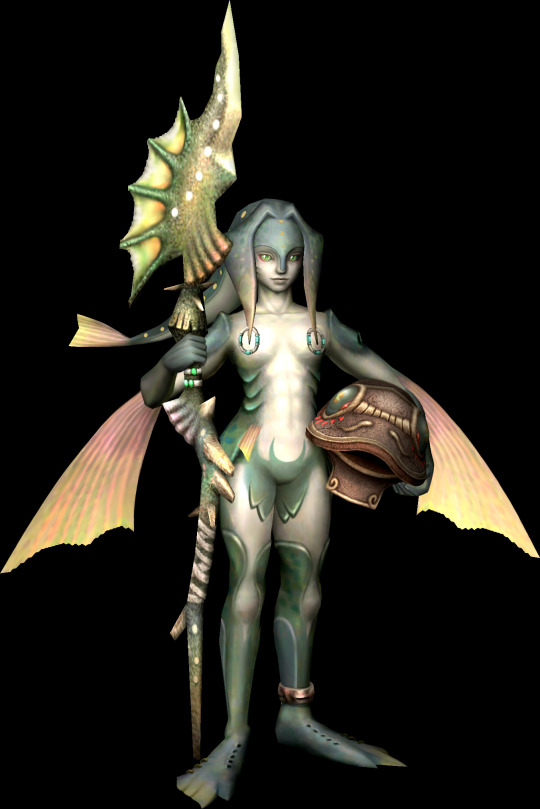
This subspecies of Zora actually marks an evolutionary transition point between the Lake Zora and the Sea Zora. They still possess muted coloration to blend into the water for stealth attacks, but they’re starting to branch out; sunset-colored fins and bioluminescent spots on their headtails mark the development of several key traits BoTW Zora possess.
It’s also the point where we first see sign of the red and purple color mutations.
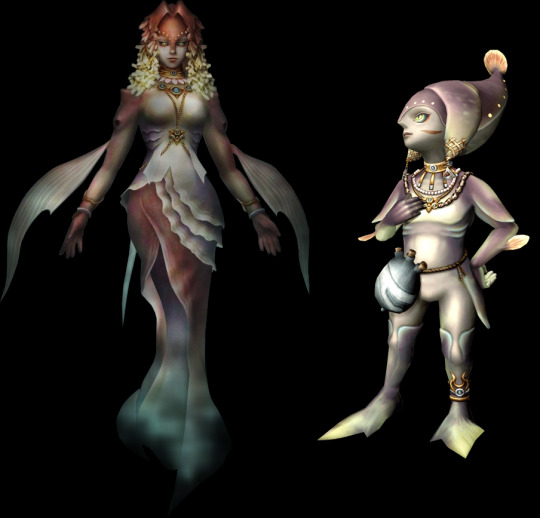
But by far the most interesting point of this particular era in Zora history is their cultural development.
This is the point in time where they start decorating their domain with the trademark Zora silver we know them for in BoTW, with intricate lacing designs in semi-see-through walls.
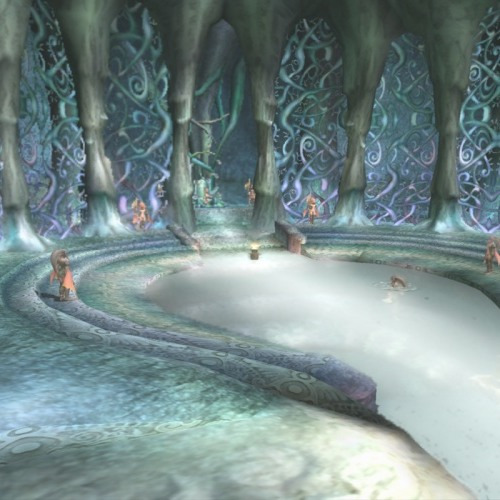
We also see the first use of Zora spears, along with masks worn by soldiers and metallic jewelry, signifying that the Zora have begun to develop the means to forge tools.
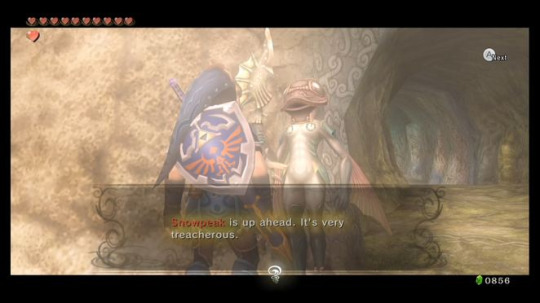
This is huge, from a worldbuilding perspective. Aquatic races tend to get locked into a stone-age level of tech, because it’s insanely difficult to forge metals without fire and without cooking yourself. The techniques they use to make these weapons and decorations, though they remain a carefully guarded Zora secret, are the reason they can make grand palaces like we see in BoTW.
This era also marks the appearance of Zora armor; as in, clothing created from Zora scales.
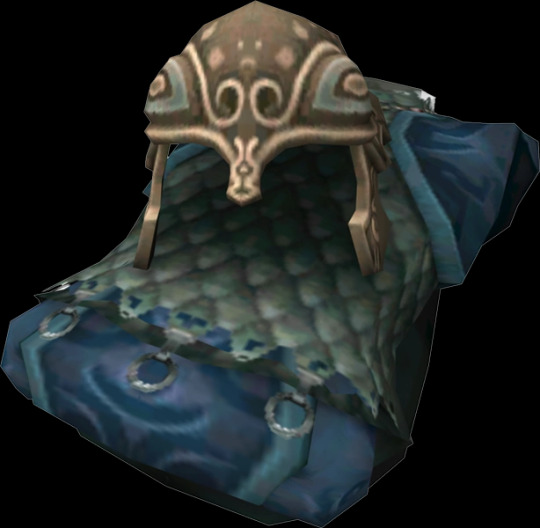
Magical garments for breathing underwater existed before, but the presence of this here means that Zora can both shed and craft their scales into a kind of chainmail mesh. In later years, this kind of garment would become the equivalent of exchanging sapphires, specifically for inter-species relationships in Hyrule.
And, finally:
Sea Zora
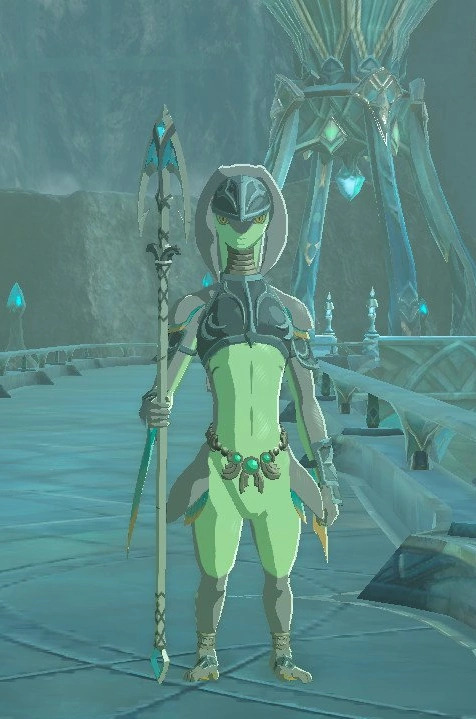
These are probably the Zora you all were expecting. I’ve covered the reasoning behind their coloration and physical variation here, so let’s get to the stuff I haven’t quite covered yet, shall we?
The Zora of BoTW are highly adapted to salt-water conditions, capable of breathing in both fresh and seawater. Their scales, however, are thinner due to generations of enjoying a peaceful lifestyle, making them highly susceptible to burns, frostbite, and electrical nerve damage. This makes elemental arrows a huge threat to the Zora population; it’s an ongoing debate in their kingdom on whether or not it should be banned.
A Sea Zora’s lifespan consists of about 20 years of being a guppy, at which point, they develop their “sea legs.” As you’ll notice, this is much longer than the standard infancy of their ancestors; while Lake Zora matured at a similar rate to humans, Sea Zora more closely resemble the lifespans of River Zora, which can lead to generations of Hylians passing by in only one Zora lifetime.
After growing out of their guppy phase, Sea Zora stay at a relatively small size, even into adulthood, until they hit their growthspurts. This final stage of Zora maturity is triggered by environmental factors, such as temperature, abundance of resources, and emotional stability, though some Zora take longer to reach that finicky balance than others. The growth stage takes about two years to finish; Mipha, a hundred years prior to BoTW, was right in the middle of hers, thus making her much smaller than other fully grown Zora at the time.
On a cultural note, Zora from this era participate in neck elongation, like many human cultures in Africa and Asia.

In this practice, coils of metal are wrapped around the neck to give the appearance of it being longer than it actually is. Contrary to popular belief, this doesn’t actually dislocate the neck and vertebrae; instead, it works by pushing the collarbones down and the chin upwards.
We can see this practice on Zora of any age, and all walks of life; it’s even present in the Zora Armor, to a lesser degree.
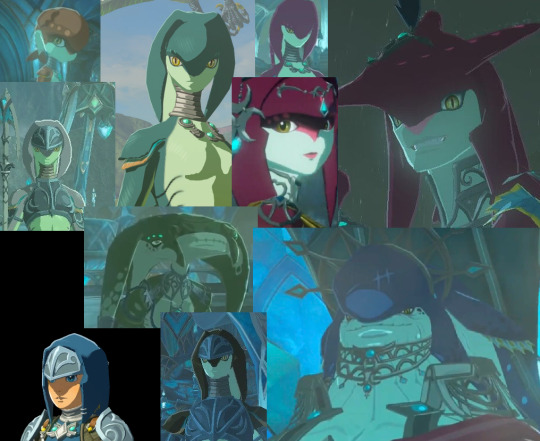
Notably, though, Royal Zora and Zora in direct service to the Zoroyal family haf elegant frames rather than coils, as a secondary indicator of status.
Luminous stones are popular with these Zora, and it’s believed that this started as a mirror to their developing bioluminescence. And they have a lot of it; unfortunately, however, it’s on a scale humans don’t perceive very well, as to us, the most glow we get is right above Muzu’s eyes.
But for Zora? They see A LOT.
Sidon, for example. We see him like this:
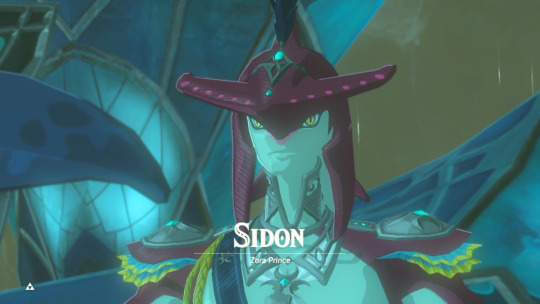
But Zora night vision isn’t as good as ours, so they’d see something more like this instead:
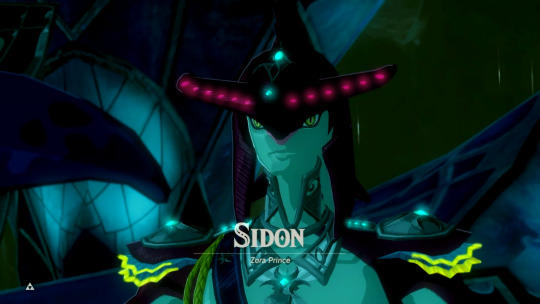
(Not an accurate depiction, a rough estimate done by someone with little art skills)
The spots on his head, the brightly colored edges of his fins, and the luminous stones all stand out, letting Zora identify each other in murky waters easily.
Sea Zora eyes possess special cells in them specifically for detecting luminescence. These disappear in strong light:
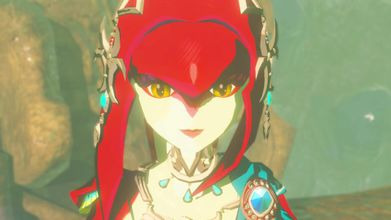
But are visible in darker settings, like rainy Zora’s Domain, in the form of tiny dots on the outer edge of the iris.
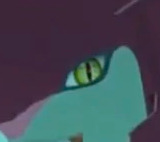
These cells work by catching miniscule amounts of light and color and reflecting them, causing weak dots to become much more pronounced, at the cost of their night vision overall.
Hope this answered your questions about the Zora!
#loz#zelda#headcanons#botw#worldbuilding#guys there are so many subtypes of zora#SO MANY#bioluminsecence tho...i wish I could draw it better#zora#also i just realized i wrote 'takita' instead of 'tottika' in the last post so press f in the chat#i refuse to proofread this
276 notes
·
View notes
Text
4th of July: John Laurens and Slavery, and why we shouldn’t idolize him
I’ve written several drafts of posts trying to explain John Laurens’s complicated relationship with slavery and, in a broader sense, how the hypocrisy of freedom for our country--while denying the freedom of enslaved people--has led directly to the situation we find ourselves in now, in terms of race in America.
I’ve struggled with even going there, because I’m trying to focus on the present now, not the past. But I firmly believe that America can only fix its present once we’ve faced our past. And I want this information on my blog. John Laurens was not a perfect man, not even close. He was an abolitionist, yes. But how he came to these views is complicated and his personal conduct towards African-Americans is often troubling. Too often, in fact, the racist ideas of his era are visible in his writings.
There’s lots out there about not glorifying or idolizing historical figures, such as Thomas Jefferson, Washington, and other slave-owners.
This is becoming particularly clear today, with the truth of violent systemic racism in America finally becoming more fully recognized. When people watch videos of a black man begging for his life under the knee of a policeman, that brutality becomes undeniable.
But John Laurens is often exempt from this “historical disclaimer” of sorts. In the world of the Hamilton fandom and even more broadly in history, he becomes The Abolitionist, a White Savior figure who abhorred slavery and fought for racial justice, no exceptions, no fine print.
But there is a fine print for John Laurens. And it is a vital one to examine, because it shows us the importance of carrying our beliefs into our personal lives, not just our political ones.
First, let’s acknowledge the circumstances John was born into.
South Carolina, where he was born in 1754, was a southern colony, and as such relied mainly on agriculture in its economy. The rich plantation owners were the pinnacle of society. Washington’s family is an example of one such rich and powerful plantation owning family. The wealth and standing in society of these men led to positions in the government. And a man who illustrates this perfectly is none other than Henry Laurens.
Henry Laurens, John Laurens’s father, was, despite his pleading to the contrary, a significant slave owner and slave trader. Though in his private life he claimed to dislike slavery, he co-owned the largest slave-trading house in North America, Austin & Laurens. It doesn’t matter what he thought, or claimed to think. What matters is what he did.
Henry Laurens owned between close to three hundred slaves. His attitude toward the treatment of his own slaves was dehumanizing, self-righteous, and willfully ignorant. He chose to look upon himself as a “good” slave owner, rather than actually face the horrors he was perpetrating. He wrote in a letter that he’d rather treat his slaves “with Humanity” and make “less Rice” than “submit to the Charge of one who should make twice as much rice & exercise any degree of Cruelty towards those poor Creatures who look up to their Master as their Father, their Guardian, & Protector.” What Henry is trying to say here (to my reading) is that he’d rather his plantation produce less of a crop and not work his slaves too hard than treat his slaves cruelly to produce more profit.
Henry Laurens, in an attitude that is all too familiar today, consistently chose to think of himself as an exception to the problem rather than as part of the problem. He was quick to talk up abolition and condemn cruel treatment of enslaved people. But when it came to his own slaves, he insisted that “my Servants are as happy as Slavery will admit of, none run away, the greatest punishment to a defaulter is to sell him.”
I don’t know how John’s mother, Eleanor Ball Laurens, viewed slavery, but she also came from a large slave-owning family. Even if she personally didn’t approve of the practice wholeheartedly, she benefitted directly from slavery and married someone in the slave trade.
So this is the life John Laurens was born into. A life of incredible privilege, sourced directly from the the slave trade and the labor of kidnapped and enslaved Africans. This is the first thing that needs acknowledging in terms of John’s relationship with slavery. He was able to accomplish much of what he did because of his social standing and wealth as the son of a very powerful South Carolinian, powerful mostly because of his standing in Southern society.
John was able to get his education in Europe because of slavery. He was able to use his father’s influence to become an aide-de-camp to George Washington. His social standing and quality of life all stood upon the backs of slaves.
Because of this background, John was exposed to the brutal truths of slavery since he could understand the world around him. Is this how he came into his abolitionist views? It absolutely could be. But it is more likely that John first became serious about abolition when he was taken to Europe for his education. He attended a school in Geneva, a cosmopolitan place that was very open to new ideas. Being an abolitionist was not considered as radical there as it was in the Southern Colonies, and there was more writing on the subject of abolition, including a poem by Thomas Day, an abolitionist patriot, whom John was friends with.
So John’s serious thoughts on abolition may have partly been a product of being away from a place where slavery seen as a part of life and being in a place which was more open to abolition. John may have thought slavery wrong for a long time, but lacked adequate support to be vocal about it.
Significantly though, John did not abandon his beliefs when he returned to America. He continued to be a vocal abolitionist, and unlike his father Henry, confronted actual slave owners and tried to convince them to free their slaves… including his boss, General George Washington.
He also converted Lafayette into an ardent abolitionist, and Lafayette, even after Laurens’s death, stuck to these beliefs. He later in life even bought a plantation and ran it with the labor of paid black people, to prove it could be done.
But once we get to the war, we must also talk about Shrewsberry.
John didn’t own slaves, technically. But his father dispatched two of his slaves to serve as John’s valets during the war, one of whom was named Shrewsberry. (Something to note: I am not sure if these slaves were paid or not. I would assume not, and I have yet to find a record of payment, if it did exist. But if anyone knows more about this, I would love to know the answer, as it’s an important question to think about.)
This alone would mar John’s “perfect abolitionist” image, but it gets more disturbing when you consider how John viewed and treated his valets. I should mention we don’t have a ton of evidence of their living conditions, but what we do have is distressing.
On to the primary evidence: if you read the correspondence between John and his father, a funny/not funny pattern is that John is always requesting clothes, fabric, hair powder, etc., from his father. He usually thanked his father for these items. But here is a quote from a letter John wrote to his father on December 15th, 1777: “Berry received a hunting shirt and a check shirt. If there be any difficulty in getting him winter clothes I believe he can do without.” So while John advocated for black Americans in his public life, his private conduct tells differently.
And this is further evidenced when, after Laurens’ death in 1782, Thadeus Kosciuszco wrote to Nathaniel Greene that John’s slaves (his father's technically, as explained above) were “nacked” and that they were in need of “shirts jackets Breeches.” (“nacked” meaning “naked.”)
While John Laurens was certainly more enlightened than the average man of his time on the subject of slavery, he still had trouble connecting his broader ideas of freedom and emancipation to his personal life. He also wrongly blamed Shrewsberry for the loss of a hat, writing to his father, “Shrewsberry says his hat was violently taken from him by some soldiers as he was carrying his horses to water. If James will be so good as to send him his old laced hat by the bearer I hope he will take better care of it.” The blame for this incident obviously lies upon the soldiers who stole Shrewsberry’s hat, but John acts like Shrewsberry was in the wrong, or somehow that having the hat “violently taken” indicated that Shrewsberry was not taking care of the hat. The automatic and unjust condemnation of Shrewsberry again speaks to how John did have the prejudices of his time period in his head, even as he fought against them in a broader sense.
Later in the war, John left Washington in favor of his home state, South Carolina. He wanted to raise a regiment of slaves to fight for the patriot cause, who would then be emancipated for their service. John had written his father about the idea earlier, saying,
“I would bring about a twofold good, first I would advance those who are unjustly deprived of the Rights of Mankind to a State which would be a proper Gradation between abject Slavery and perfect Liberty—and besides I would reinforce the Defenders of Liberty with a number of gallant Soldiers—Men who have the habit of Subordination almost indelibly impress’d on them, would have one very essential qualification of Soldiers—I am persuaded that if I could obtain authority for the purpose I would have a Corps of such men trained, uniformly clad, equip’d and ready in every respect to act at the opening of the next Campaign…”
Reading through this carefully, we can see some ideas expressed here that are important to note. Firstly, “proper Gradation between abject Slavery and perfect Liberty.” This means that though John did want to free the slaves, he did not think that black people should have the “perfect Liberty” that whites enjoyed. Additionally, when John writes, “Men who have the habit of Subordination indelibly impress’d on them” he is suggesting (to my reading) that because slaves were constantly treated as inferior, they would be good soldiers (I assume because soldiers have to obey their commanding officers.) Honestly, this reads to me like John wanting to take advantage of the cruelty slaves endured because “They’re used to it.”
Henry wrote back that what John was offering was hardly better than slavery, again assuming his attittude of “my slaves are happy.”
John wrote a long letter in return, explaining his reasoning and also basically being like, “dad please support me, dad, please.” But there are also some phrases here, in his letter defending his abolitionist views, that are revealing about the prejudices John harbored.
He writes, “I confess, indeed, that the minds of this unhappy species must be debased by a servitude, from which they can hope for no relief but death, and that every motive to action but fear, must be nearly extinguished in them.”
Note John’s reference to slaves as a “species” rather than a race. (And, by the way, race is a social construct, not an actual biological thing.) The belief that blacks and whites were separate species was common at the time, and often used by slave traders to justify their actions. And this bit of writing shows that even if John didn’t really believe this wholeheartedly, he at least had the idea in his head. However, later in the letter John does use “race” so it’s a little unclear what he actually believed.
And we can see the belief that black people were not as intellectually capable as white people, owing to their enslavement.
Gregory Massey puts it this way: “Young Laurens reasoned that blacks were not innately inferior to whites; rather, their apparent mental deficiencies resulted from generations of enslavement.”
John goes on, “I have had the pleasure of conversing with you, sometimes, upon the means of restoring [the slaves] to their rights. When can it be better done, than when their enfranchisement may be made conducive to the public good, and be modified, as not to overpower their weak minds?”
What sticks out here is, of course, the assertion that the slaves had “weak minds.”
Essentially, John thought that once black people were allowed to live free, “rescued from a state of perpetual humiliation” as he put it in the same letter, their nature would change to more like whites. Black Patriots and Loyalists: Fighting for Emancipation in the War for Independence by Alan Gilbert states,
“Nonetheless, John Laurens retained a slave-owner’s perspective about the psychology of blacks at the time. In a 1776 letter to his father, he ignored manifold black acts of resistance and their hunger to be free: ‘There may be some inconvenience and even Danger in advancing Men suddenly from a State of Slavery while possessed of the manners and Principals incident to such a State... too suddenly to the Rights of freedman. [T]he example of Rome suffering from Swarms of bad citizens who were freedmen is a warning to us to proceed with caution.’ [...] The son insisted, however, on the principal that slavery is simply wrong, the immoral shackling of another: ‘The necessity for it is an Argument of the complete Mischief occasioned by our continued Usurpation.’”
But the same book also says, “John Laurens was a practical abolitionist. Favored by nature and fortune, he chose no easy path. He could, for instance, have worked for Washington, recruited a company of white soldiers as his father urged, and still have advocated for the “public good.” Instead, he committed himself to the nobler course of fighting determinedly for abolition.”
However, “18th century abolitionist” usually did not mean someone who believed black and white people were equal and should have the same rights. It meant that you wanted to end slavery. The difference between these views often gets blurred for John Laurens. Saying that John Laurens was an abolitionist is accurate, but he probably did not believe that black and white people should have the exact same rights, at least not at first. That needs to be acknowledged. John was an abolitionist, but it is unclear how much equality he really wanted.
Only paying attention to his anti-slavery professional life also leads to the idea that it is safe to idolize Laurens, rather than critically examine his complex views on race. The idea forms that he is the one white man from the 18th century we can be fully proud of. The one we can say is our beautiful cinnamon roll without having to confront his relationship with slavery. The fact that John Laurens wanted to help enslaved people gain their freedom doesn’t change the ways in which he benefited from white supremacy, nor how he treated his personal servants, nor the racist ideas he expressed in some of his writings.
This does not mean Laurens was evil, or that you can’t like and admire parts of him. By the standards of other revolutionary figures, like the aforementioned Jefferson and Washington (and Madison and Hamilton to an extent*) Laurens was remarkably enlightened. But also, that in itself is terrible. Like, the idea of a “good guy” from the 18th century is still one that believed that black people had “weak minds” owing to their enslavement.
If we truly want to reckon with the racial sins of America, and how they originated, we need to see figures like Laurens for all they were. Not just the noble abolitionist, but also the inherently privileged white man whose righteous public crusade was enabled by the very system it sought to end, slavery. We also need to see him as the extremely wealthy young man who regarded the command of his servants as part of the natural order of his life.
I didn’t write this solely for history. John’s story is a reminder to all allies that actions based on our beliefs are important to make in our private lives, as well as public. Yes, it’s important to advocate for racial justice in our public and professional lives. But it’s also important to examine and be honest about our own forms of privilege and the ways in which we have internalized the racism of the world around us. All white people in America benefit from slavery and the systems it was built upon, even those whose forebears came to America long after slavery was abolished. I firmly believe that a step forward for racial justice in the US is simply to acknowledge privilege, because we cannot fix a broken system until we realize all the ways in which it is broken.
#John Laurens#slavery#abolition#Alexander Hamilton#I hope it came out okay#also I'm completely open to feedback#long post#Jefferson#Washington#Madison#founding fathers#4th of july#quotes#letters
575 notes
·
View notes
Text
Natashlia Romanoffva: What's In a Name
Like any professional spy, our beloved Black Widow has many faces (and haircuts). She also seems to have a lot of names. Ever wondered what’s the deal with that? Let your humble Russian speaker explain.
To start with, let’s go over the authentic Russian variants of the Widow’s first name. I’ll mark the stressed vowels in bold.
Natalia (Наталья) — the full formal form of the name.*

*Actually, there are two forms possible: Nataliya (Наталия) [pronounced: na-ta-li-ya] and Natalia (Наталья) [pronounced na-ta-lya]. The former has a ye olden days flavor, and the latter is your ordinary everyday Natasha.
Which brings us to:
Natasha (Наташа) — the most common shortened form of the name. In fact, so common that it has branched out and become a stand-alone name in the Western countries.

Now, let the fun begin.
Nata (Ната) — a shortened form of the shortened form. Used fairly often, slightly more familiar than the full shortened form.
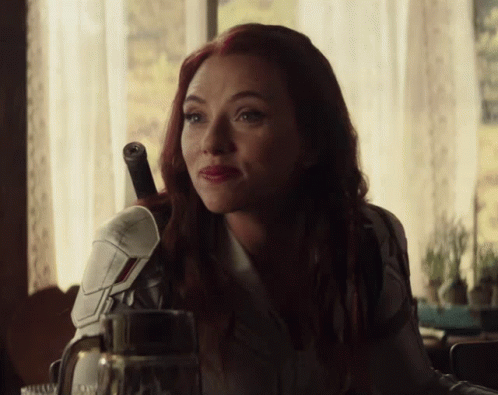
Natashen’ka (Наташенька) — much tender, very familiar. Be careful with this one: it can sound condescending (if used by an old white guy, for example). Between close friends, though, it expresses some industrial-grade affection.

Natashechka (Наташечка) — almost like Natashen’ka, but with a dash of irony.
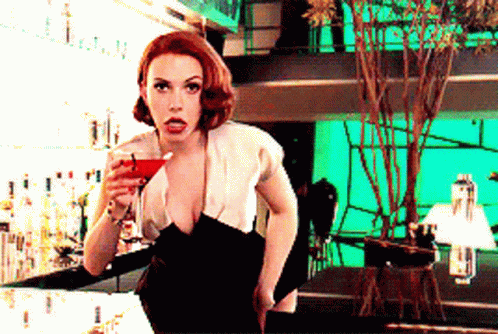
Natusya (Натуся) — no one but your parents (or grandparents) can call you that. In fact, no one should be calling you that, not even your parents (maaaaaybe grandparents). Trust me, if anyone calls our Nat this, they won’t stay alive for long.
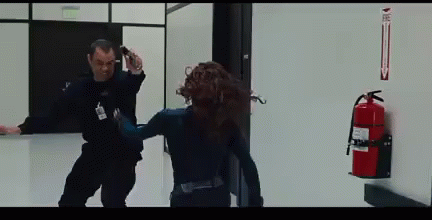
This form can also, in families particularly fond of babytalk, devolve into the ultimate diminutive form Tusya (Туся), which will bring immediate violent death upon you.

Natalie (Натал��) [pronounced na-ta-lee] — release les baguettes, someone’s going for French! Mostly used in a joking way.

Natakha (Натаха) — this is your Slav squat girl. She spits sunflower husks, gulps vodka like water, and will fuck you up with the neck of a broken glass bottle, which, by the way, is called rozochka [a little rose] in Russian and I think it’s beautiful.

As for the common English forms of the name:
Nat can be used in Russian as a vocative form of Nata, i.e., a shortened form of direct address, but not something you’d use when referring to a Natasha in third person.
Tasha is not something Russian speakers use to shorten Natasha, unless they want to be very extra.

Now let’s move on to Nat’s last name.
Here’s the thing about Russian surnames: they don’t actually end in -off in Russian. Here’s another thing about Russian surnames: they’re gendered, and most will have different male and female forms.
So, -ov is one of the most common suffixes for a Russian male surname. But, since Russian phonetics insist that the hard consonants at the end of the word are softened, it’s pronounced more like -of. Which led the West to transcribe the ending as -off.
Now, the female version of this suffix is -ova. No consonant softening here.
Thus, if Nat was born and raised in Russia by Russians, her surname should be Romanova (which is a pretty common Russian surname, which literally means “of someone named Roman”), a female version of the male surname Romanov. On the other hand, she could have changed her surname to Romanoff, which is a legitimate westernization of Romanov, when choosing to work with S.H.I.E.L.D. and cutting off her ties with Mother Russia (I’d do that, if I were her).

You think we’re done? Surprise surprise: Russian people have ONE MORE NAME to consider.
This third name is called a patronymic, and Nat’s patronymic MAKES NO FUCKING SENSE. And no, it’s not exactly a middle name.

A patronymic is a common thing in all Slavic cultures and is formed based on the following pattern: the kid’s father’s name + gendered ending. Think Icelandic -son and -dóttir. Or something along the lines of the The Handmaid’s Tale naming system if you want to go all morbid.
A quick note on usage: in the Russian-speaking cultures, first name + patronymic is used as a formal form of address. This is what you’d call your teacher, your boss, your doctor, a character from Tolstoy’s novel, or maybe even a friend if you’re making a thing of being extra respectful (or just extra). Basically, you’d want to use this combo in the same situations where you’d use Mister/Miss Last Name in English.

Now, in Captain America: The Winter Soldier the shady Hydra doctor Arnim Zola calls Nat “Natalia Alianovna”. Seeing that -ovna is a female gendered ending, it would make Nat’s father’s name Alian, which is not a Russian name I have ever encountered. I mean, it probably exists, but it’s definitely not a common one.
But wait a minute. As much as we’d all like to pretend that The Avengers: Endgame never happened, there was that moment when Red Skull addressed Nat as “daughter of Ivan”. Trust me, Ivan is not and cannot be a form of Alian, so in this version Nat’s patronymic should be Ivanovna. (Also, the proper stress is Ivan.)
Dear Marvel, what the hell?

There’s a theory that Nat may have a biological father and a foster dad, which might explain why Dr. Zola and Red Skull have different information. And after all, if Bucky Barnes can have three different birth dates in the MCU, why can’t Nat have two different daddies?

336 notes
·
View notes
Text
Writerly Ephemera
I was tagged by @amywaterwings @mostlymaudlin @tea-brigade @effing-numpties @captain-aralias @bloodiedpixie . This is so cool, so thanks for sharing yours! ❤️
Per Amy: We add little bits of ourselves to our writing, scattering memories and places and phrases and things into our stories. The game is to find five examples of this, of YOU, in your writing and show everyone.
I don’t really feel like I put much of my own experiences into my fic, probably because I don’t feel like I have a lot of experiences to pull from. (That’s not me being self-deprecating; that’s me never going anywhere or doing anything.) So, let’s see what we come up with!
Going to tag here. I feel like I’ve gotten to this late so I’m not sure who has been tagged. Anyway. No pressure, loves. Just saying hi. 🥰 @theflyingpeach @bazzybelle @otherworldsivelivedin @unseelieseelie @wetheformidables @caitybug @nightimedreamersworld @foolofabookwyrm @stillmadaboutpetra
1. I have put the most of myself into A Man of Letters. I have my degree in English Lit and when I was in college, I was at the height of my Jane Austen obsession. So I sort of built my degree around the development of the English novel. My senior thesis was on a book called Evelina by Frances Burney, who was one of Austen’s greatest literary influences. Evelina is an epistolary novel—told entirely in letters. I love the epistolary form, for the same reason I love dialogue and texting fics. It’s such a fun narrative technique and can reveal so much about individual characters. It’s actually a bit like the way Rainbow Rowell uses multi POV in her books. Anyway, my love of the epistle was on full display in this fic, which is ofc told in letters. —Do I share a passage? That’s like...the whole fic 😅 So, idk. Here’s Simon being a disaster as he meditates on letter writing:
Dear Penny,
As I start this letter, I already know I'm not going to post it. I know I won't be able to bring myself to do it, because of what I have to say to you. I do feel bad. It's not that I don't want to tell you. And you know I'm so much better at writing things down than saying them out loud. It's only that I feel like this would all sound better coming from me in person. I just don't think I'll be able to make you understand in a letter. I'm still trying to understand myself. And writing all of this down helps me with that. Even if I'm only pretending to write to you, it makes me feel better, to think of you on the other end. I promise I really will tell you everything as soon as we're together again.
2. Also for A Man of Letters, my fascination with Regency fashions, in particular the dandy, was a major factor. I did an art book about this, comparing how fashion has changed over time, especially in regard to gender. (I also did an art book based on Evelina, since I’m on the subject. I minored in book art. 😁) I always fancied the look of a Regency dandy, so that was my gift to Baz.
Whoever has been working their magic on Salisbury should in fact be the person to whom I offer my eternal devotion. Alas, I am left to flounder under the burden of lusting after a man who is incapable of dressing himself.
The utter and unmitigated shame.
Salisbury wore a forest green wool frock coat that set off the golden highlights in his brown locks. This was accented with a green and aubergine striped silk waistcoat that was trimmed in white piping and felt much too daring a pattern for the man. (I don't care if he was a soldier; it takes a hardier man than him by half to choose a stripe like that.) His charcoal trousers were enticingly snug, but not so much to prove lethal. His cravat and points left much to be desired, though that likely reflected poorly on his ability to keep himself in order, rather than the ability of his valet. (Good God, maybe the man doesn't even have a valet!)
3. When it came to my countdown fic, To the Manor Borne, I had Shep make a reference to Cluedo, because Pitch Manor would be perfect for a real life game. Behind that, is the fact that my family played a lot of Clue and I watched the movie a whole bunch growing up, to the point where my sister and I used to quote it to each other. This was a way to pay homage to that. He also talks about playing the game Murder in the Dark, which was one I played at Halloween as a kid. One of my cousins was dressed as a ghoul with glow in the dark face paint and we were in my grandma’s creepy upstairs. Perfect vibes.
I’ve seen the kitchen and the dining room and the library and the study and the parlor. Walking through this house is like playing Clue. (They call it Cluedo on this side of the pond, because they like to be difficult.) (That was a whole thing. Do not get me started.)
I keep thinking Colonel Mustard’s going to pop up out of nowhere and brain me with a lead pipe.
And:
What kind of games do you play with magickal friends who don't have magic? Twister? Not with the wings and tail. Cards? Baz and Penny would cheat. Or accuse everyone else of cheating if they didn't win. Murder in the dark? With these people, in this house, I knew it would turn literal fast, and also it was like ten in the morning. Hide and seek? Simon and I would hide and everyone else would ditch. Snowball fight? World War III.
4. I’ve referenced Mozart in my fics a couple of times because when I was first getting into classical music, I was listening to a lot of Mozart. My sister had a CD of some of his early symphonies, and my local classical station does “Mozart in the Mornings” which happened to fit in the exact time slot between two morning classes I had my first year in college. I’d go sit in my car with a cup of tea, and just vibe with Mozart as my soundtrack. I’ve name dropped him in both A Man of Letters and To the Manor Borne. Also, Mozart wrote 12 variations on the melody shared by Twinkle, Twinkle, Little Star, which is a lovely tie in. (I also had the gang sing/cast The Holly and the Ivy, which is one of my favorite Christmas carols, and by strange coincidence was playing on the radio at the same time I wrote that scene. 🥰)
"It's a songbook," I tell him, like he can't figure that out for himself. "Did you know that Mozart wrote twelve different versions of the same song?"
He's laughing. "Mozart did not write Twinkle, twinkle, little star, Simon."
"You know what I mean."
"He composed twelve variations for solo piano on the French folk melody Ah! Vous dirai-je, maman."
"Sure. Anyway, this is for the violin. For you to play."
He's still laughing, and I'm trying to figure out what's so funny, but then he kisses me again, on the lips this time, so I figure maybe I'm still doing okay.
Only one more to go! What will it be? 👀
5. Therapy! Eheheh...😅 Look, it’s no secret the gang needs it. And tbh, so do I. Haven’t actually managed to get myself to go yet, and I think that’s where a lot of my “send them to therapy” happy endings come from. I did it in Use Your Words and To the Manor Borne. I started Chamber by Chamber with SnowBaz already in therapy, and then structured the whole thing around therapy that they give to each other and to themselves. It didn’t really fit in A Man of Letters, but if it had, I absolutely would have done it. I’ve only shared from two fics so far, and since it could kind of spoil the ending to Use Your Words (tho saying this may be spoiler anyway...), here are two snippets from It’s a Kind of Magic, Part I of Chamber by Chamber.
I've been working on articulating my needs. We both have. Ordinarily, I'd be afraid of pushing him away by making demands when he's on the verge of a spiral, but my therapist insists that I can't go on treating Simon with kid gloves. If I never ask him for anything, he'll think he doesn't have anything to give.
And
When I told that to my therapist, she said that I needed to talk it out of me and she'd help me find ways to work through it all. She said I needed to talk it out with Baz, too, so that he'd know how to help me when things got bad again—that was something else she said, that things would get bad again, and that I'd need to be prepared for that. That I couldn't expect things to be easy, and just go away.
6. BONUS! I think the biggest way I include bits of myself is in the AUs I’ve chosen to write. I have three I’m planning that say a lot about me, so I’m going to talk a bit about them here. There is ofc my Scooby Doo AU, inspired in large part by the fact that I watched it all the time growing up and also, my sister continues to be obsessed with it. When we were young, my parents were doing a lot of work on their house and we’d take family trips to the hardware store. My sister and I hated it, so we’d wait in the car with my mom and she would entertain us with “Scooby Doo stories”. Other AUs I’m planning? Troop Beverly Hills—please tell me someone else out there loved this movie the way I did when I was 5. It was very influential to baby me and I remember wishing for nothing more than being able to dress like Shelley Long. So, I’m going to let Baz do it, because I think he deserves it. 🥰 Lastly, tho it will probably be the first I write, is my Cupid and Psyche AU, from when I was heavy into mythology and religion. Since these are all forthcoming projects, I don’t really have a snippet. Instead, here’s Baz comparing Simon to Eros, which is what started my brain on that particular AU.
I am lost. I barely know anything about Salisbury, but I can't help being drawn in. At one time, I could have comforted myself that I was only so smitten with him because he looks like he was sculpted by Praxiteles. That excuse grows weaker with every encounter. He's the furthest thing from a lifeless tribute to beauty in marble as one can be. There is something deep and dark and feral inside of him and I want to claw it out. I want to see it, to let it free. To taste his wildness and his pain.
25 notes
·
View notes
Text
Sephiroth’s true eye color (among other things)
Ever since I got into FF7 stuff I’ve wondered about Sephiroth’s rather inconsistent eye color over the media he’s appeared in (which is a lot), and I think I finally have an answer for it, as well as answers for other slightly unexplained phenomena. Warning you now, this will be fairly long and full of spoilers for multiple games in the series, yet hopefully informative.
Sephiroth is best known for his green, cat-pupiled eyes, among other things, and that’s generally the accepted eye color for him in fan works and such. But his eyes are actually light blue, and not just mainly in spinoffs. There will be a TL;DR in about the middle of the post for one interesting point, and another at the end for the whole post in general.
Disclaimer: This isn't intended to be a "this is the right way to portray Sephiroth's eye color" gatekeeping thing, this is just an analysis of an element of character design that went way too deep and is breaking Tumblr as we speak hfsdgyfudgfsd
Evidence, theories and such under cut-- all 63 images (yes, you heard me, be warned) either come from various wikis as official art/screenshots/etc. or are my own screenshots:
In Final Fantasy 7, where this mess all started, his iconic official art has green eyes:

But in all other art, models, etc. for the game, even the Ultimania scan, his eyes are light blue (or some sort of blue in general):

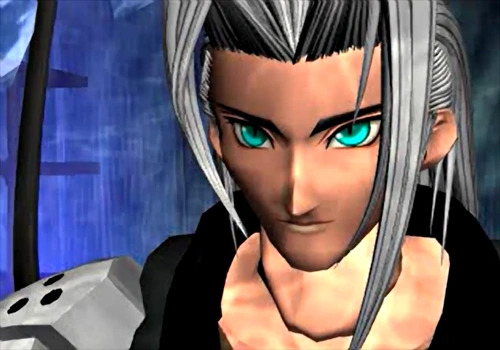
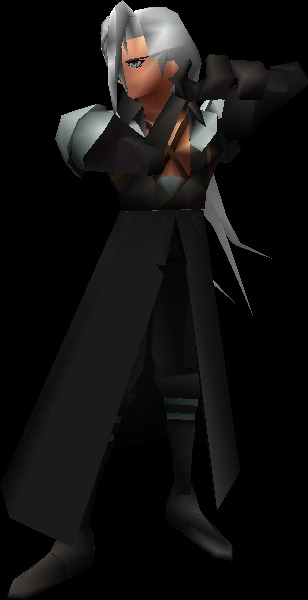
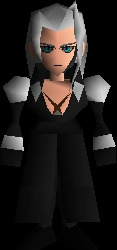
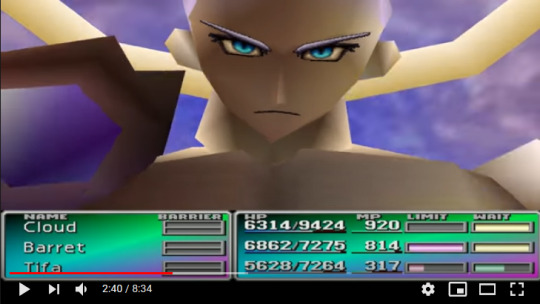
Of course, you could argue that Sephiroth’s official art also has blue eyes if you stare at it hard enough, but at first glance it’s more green than blue, and with the amount of green-eyed art I’ve seen, I’m sure many people have just accepted that his eyes are green and nothing more.
Several other games in the main series also portray Sephiroth’s eyes as light blue, sometimes borderline colorless depending on the lighting:
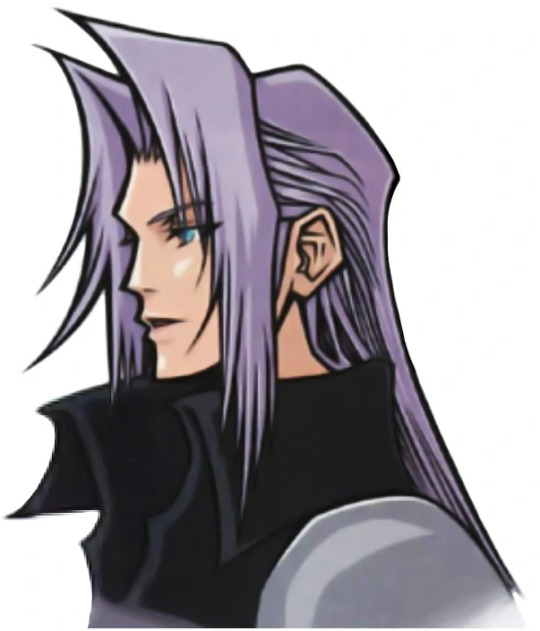
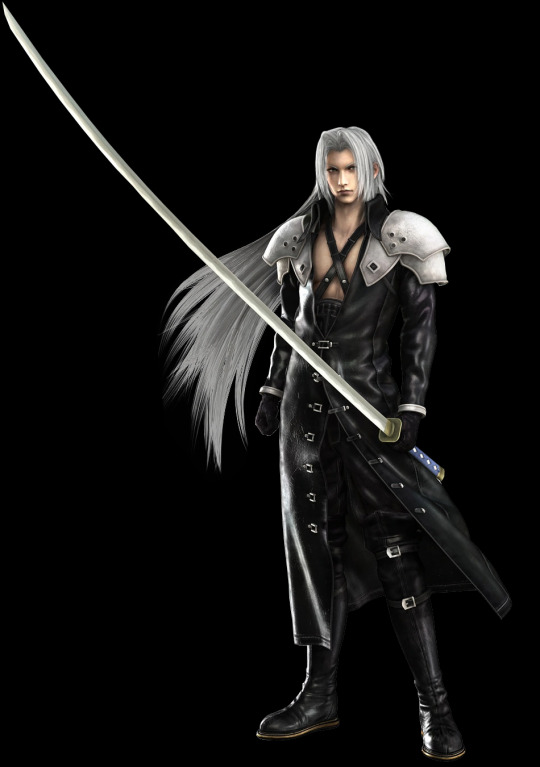
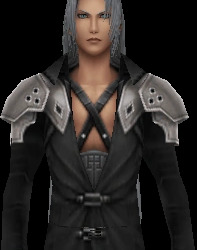
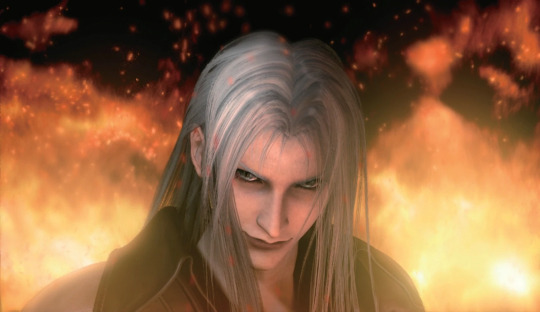
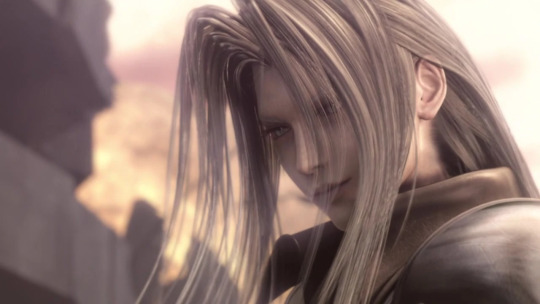
I particularly curse Advent Children for it’s washed-out aesthetic because in the darker scenes it completely masks Sephiroth’s real eye color. Thank the gods for HD screenshots.
However, there is a very interesting phenomenon that only seems to happen in Last Order, the 25-minute animated retelling of the Nibelheim Incident and Zack and Cloud’s escape 5 years after. No one seems to have noticed this yet, to my knowledge, so I’ll go through this as clearly as I can.
When Zack confronts Sephiroth in the reactor, the latter’s eyes are light blue:

It isn’t very obvious due to the mako glow tint and his face being in shadow, but I’d think green eyes would look different here, so they are light blue. They stay light blue for a while after this, until Zack begins to fight him and parries him onto the ceiling (anime physics...), resulting in this peculiar scene:
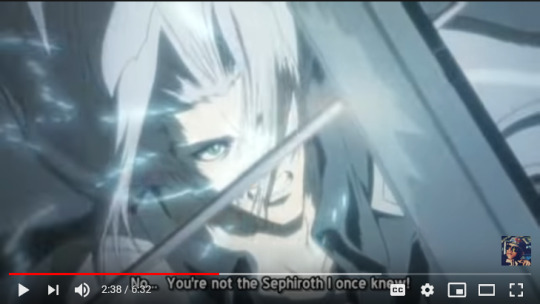

Light blue into green. Literally, you can see it happening in the actual video. This happens a second time when Sephiroth has Cloud skewed on Masamune, just more subtly:
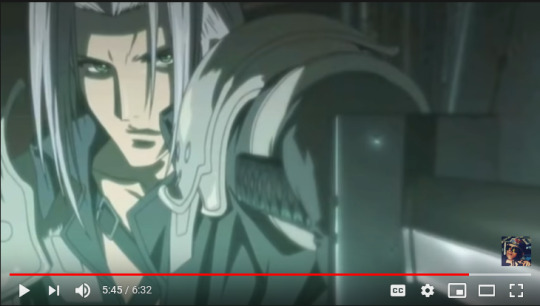
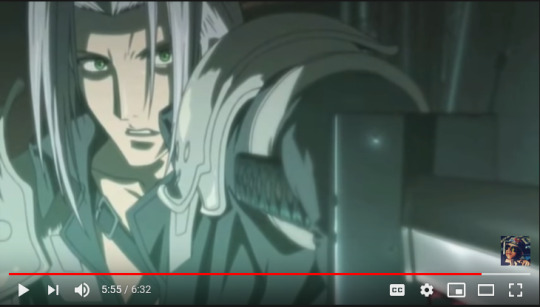
Again, light blue into green(er). Definitely something funky going on here. It goes back to light blue when Cloud tosses him away, though:

And speaking of Cloud... he, too, shows very obvious eye color change directly after this scene, as seen below:
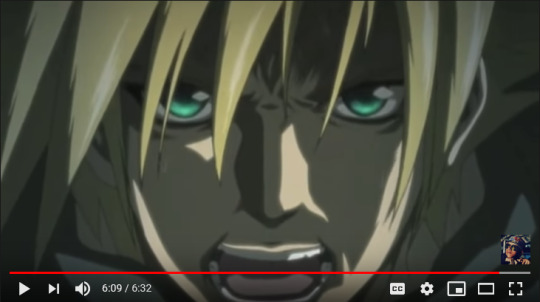
In the video they are visibly, animatedly glowing, it’s not just me discerning between two different flat shades of color. Keep in mind this is before he gets mako poisoned and Jenova-celled and whatnot, so this isn’t due to SOLDIER enhancements. What gives?
Here’s my take: it’s the Lifestream. People are made of Lifestream like everything else in in the FF7 universe, and it’s common knowledge that Lifestream/mako can do some pretty weird shenanigans. SOLDIERs are literally pumped full of the stuff and have seemingly superhuman abilities, and that’s just the lower-ranking ones. But the series has also placed a lot of emphasis on willpower, which Cloud post-experimentation struggles with due to the J-cells and stuff. A lot of people with particularly bright or “glowing” eyes have expressed an incredible amount of willpower, some of which include Cloud, Sephiroth (unsurprising), and Aerith:
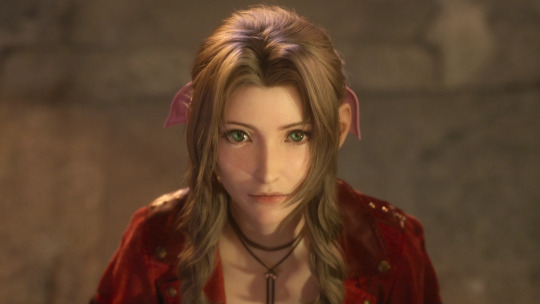
Aerith’s eyes have always been incredibly bright in the series, regardless of which game you reference. Remake especially makes this obvious, as it seems like every close-up shot of her makes her eyes the centerpiece regardless of lighting, setting, etc.:

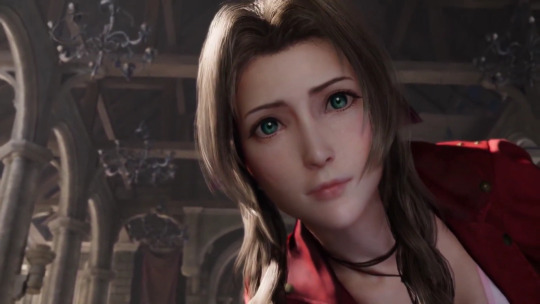
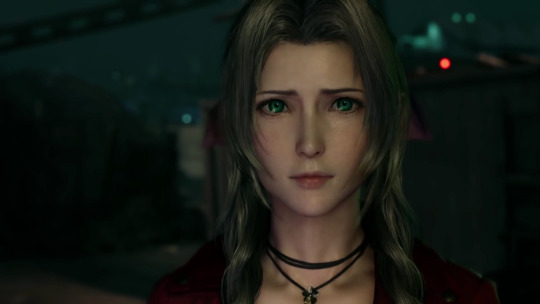
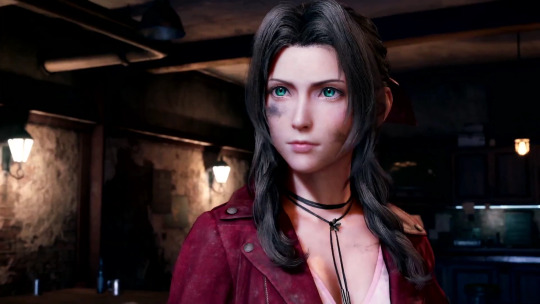
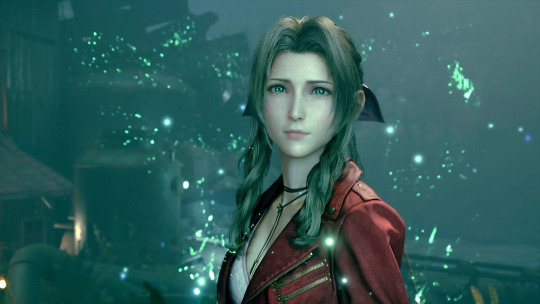
Like, seriously, they almost seem to glow they’re so bright. But here’s the kicker: Aerith is a Cetra, and the Cetra, obviously, communicate with the Planet... or, in other words, have an incredibly strong willpower that influences things. It’s been stated before by various people and media that Sephiroth and Aerith are two sides of the same coin, but not quite like this, I think. Cloud shows a similar phenomenon in his close-up shots as well, though the artificial SOLDIER glow is most likely contributing to most of it:
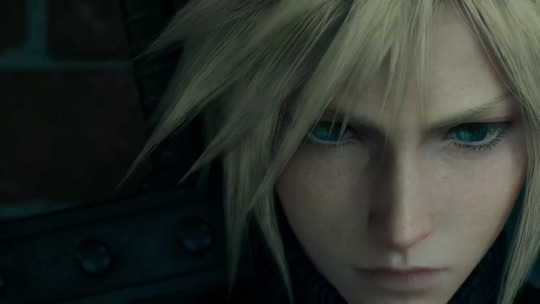

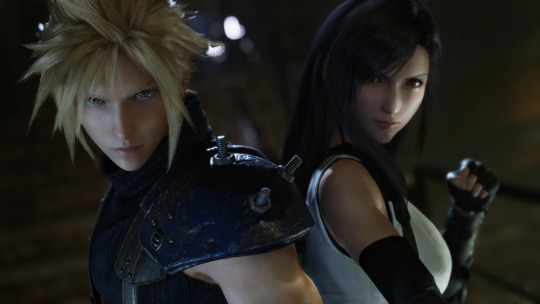


Compare these to younger Cloud in the Nibelheim flashback, when he was more innocent and had no need for incredible willpower, artificial or not:

Going back to Cloud in Last Order, the point we can make about him in particular is that when he was stabbed, literally at death’s door, he drew on his inner Lifestream for the strength to toss Sephiroth away. People have wondered for years about how this moment was even possible besides Protagonist Syndrome, and this may be the answer.
If this is the case, then this could apply to anyone: Aerith, Sephiroth, Zack, hell even Tifa seems to have slightly glowing eyes in the Remake sometimes-- and sure, it may be just the game engine making sure we can actually see their eyes in key cutscenes... but it ties into canon lore and actually makes sense, so I’m sticking with that. It’s also not a coincidence that Aerith specifically has green eyes, too, since the Lifestream in general is green-colored and whatnot.
Midpoint TL;DR: people with lots of inner willpower can call on their own Lifestream to give them strength, resulting in “glowing” or even color-changing eyes depending on how much Lifestream/mako they have in them. SOLDIERs, for example, would fall in the latter category... the most extreme being Sephiroth.
Now that's we're back at Sephiroth, another interesting point is that his eye color in Remake is consistently light blue, or some blue variation depending on the lighting, with green centers, as seen below:
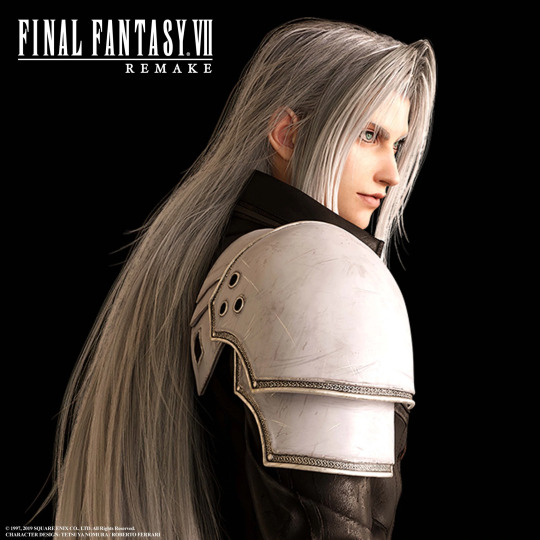
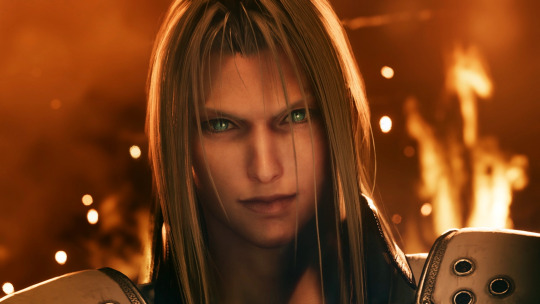
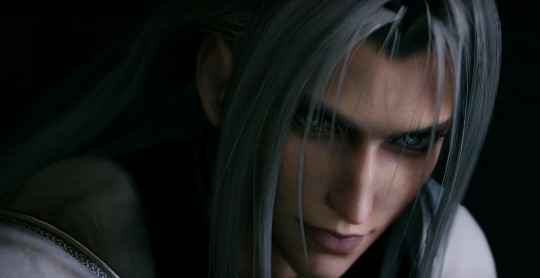
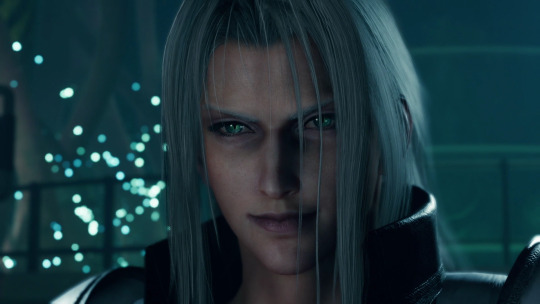
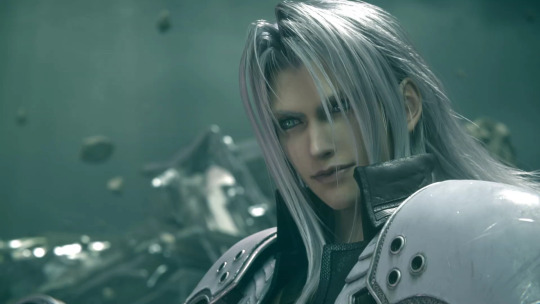

Cloud obviously shares the same eye color pattern by this point because it's implied that he has the same if not slightly more mako in him than Sephiroth, which very conveniently also equates to him having the same if not slightly more willpower than Sephiroth.
An honorable mention goes to the Remnants, since they, too, follow the light blue with green centers pattern, appearing to fluctuate between the two colors at certain times:
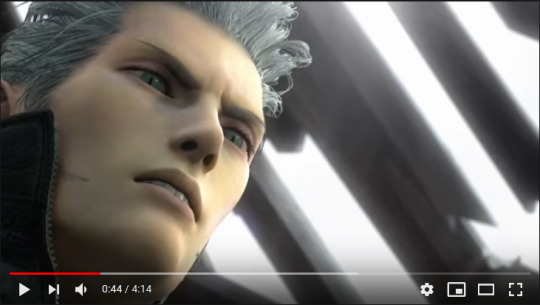
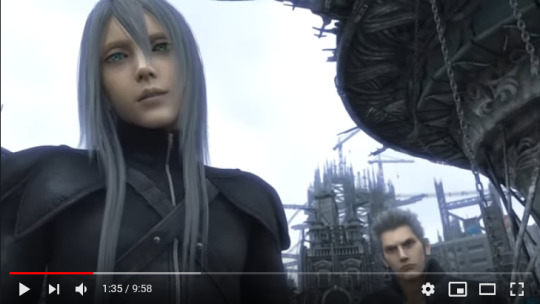

With all of that said and done, I’ll wrap this up by going through Sephiroth’s appearances in side games and other franchises as quickly as I can:
1) The Dissidia series (Dissidia, 012/Duodecim, NT, Opera Omnia) almost always portrays Sephiroth with light blue eyes in art, renders, and models, occasionally with a hint of green in them:
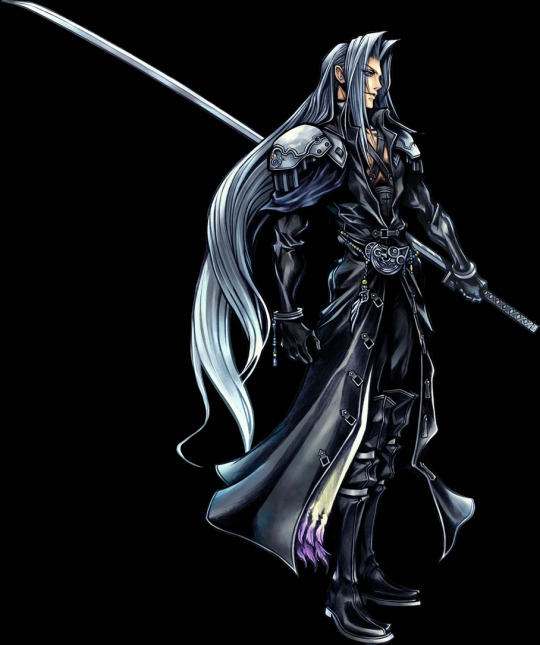
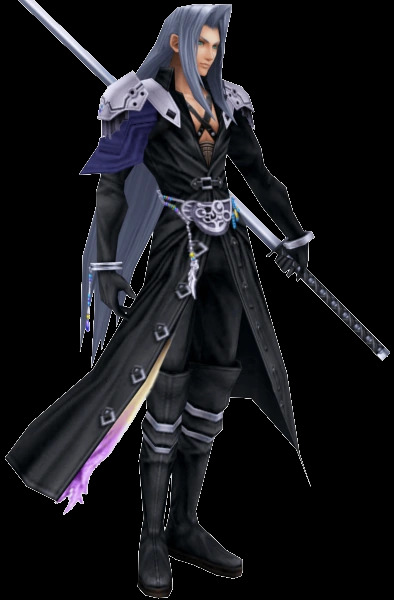


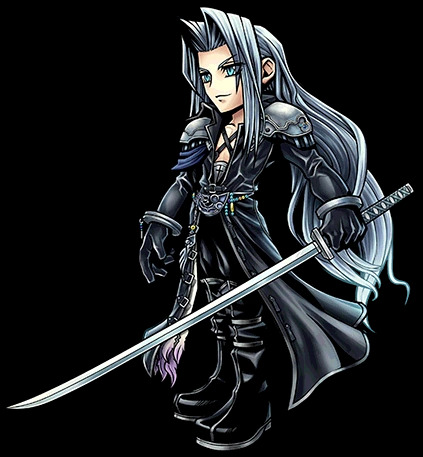

A very interesting exception is NT Sephiroth's Safer Sephiroth costume, which has completely white eyes in all three of its alts. Yes, it's basically just a cosmetic costume, but it's still worthy to note for comprehensive purposes:

2) World of Final Fantasy’s Sephiroth has light blue eyes:
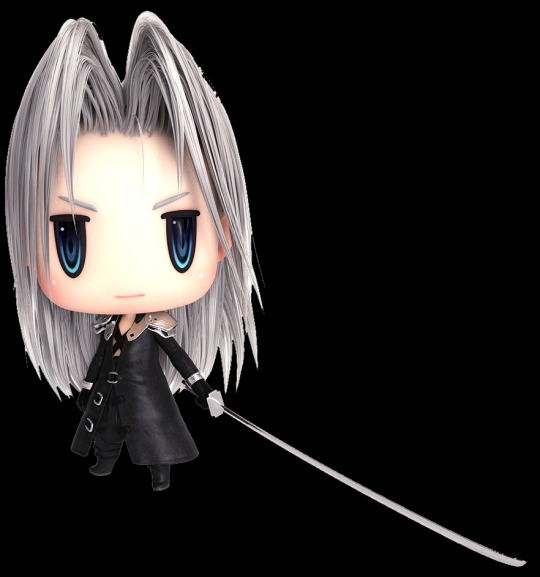
3) Record Keeper Sephiroth’s sprites are very obviously based on the original FF7 official art where he has green eyes (yes, I checked the colors by hand, they're all in the greener sections of the color wheel):


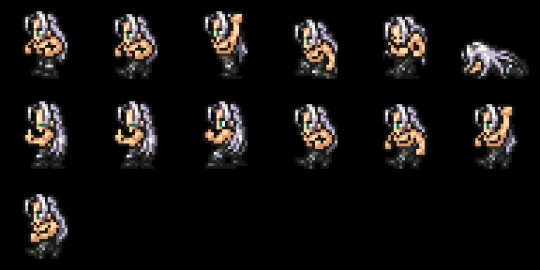
4) The Kingdom Hearts series is particularly unique because it features a blue-eyed Sephiroth but with an explicit reason for it. Kingdom Hearts 1 simply says that Sephiroth is part of Cloud’s past, but Kingdom Hearts 2 literally has Cloud saying “I'll get him. This time we settle it. Me, and the one who embodies all the darkness in me.”, and then explicitly clarifying that it’s Sephiroth he’s talking about. Sephiroth even shares Cloud’s facial shape, which is particularly obvious in KH2 renders:


All other Sephiroth appearances in the KH series also feature him with blue eyes, except for any usage of material from other media.
5) Itadaki Street games feature Sephiroth with green eyes:
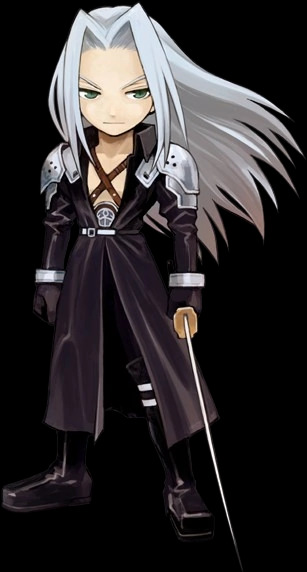

6) Puzzles and Dragons features a rare teal-eyed Sephiroth:
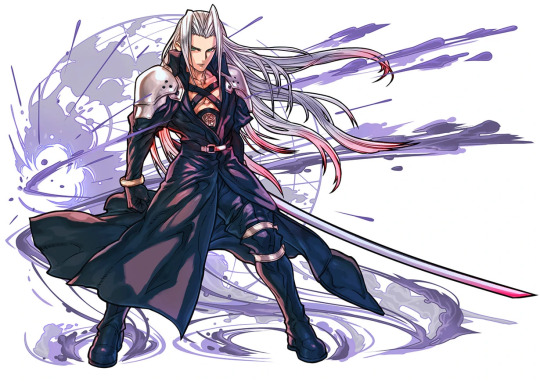
And finally 7) All other Sephiroth appearances in spinoffs and other media feature him with light blue, blue, or rare teal eyes, except for sprites, which are (most likely) reused from Record Keeper:
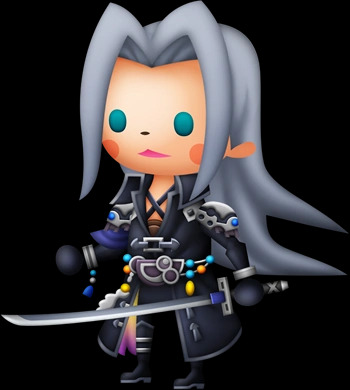


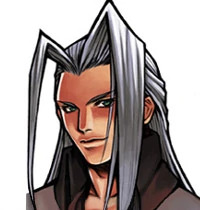

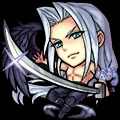
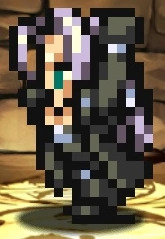
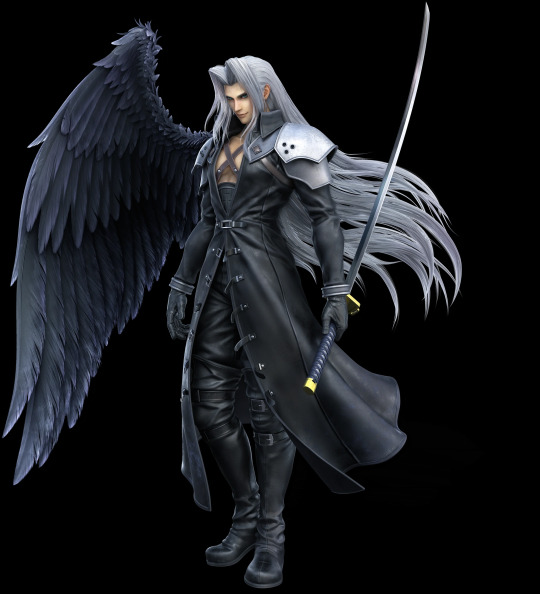
And that’s FINALLY a wrap. All my evidence for Sephiroth’s actual eye color in one place, and even a theory on why it can potentially fluctuate between that and the iconic green.
Actual TL;DR: Sephiroth’s eyes are actually light blue in 90% of his appearances, and the remaining 10% either comes from temporary green-ness or partial green-ness thanks to mako/Lifestream stuff, or spinoffs.
There is one small point I’d like to make at the end of this, and that is the remaining mystery of why Sephiroth’s pupils are even slitted and cat-like in the first place. That... is far more ambiguous in terms of evidence than the eye color. Some series, particularly the Kingdom Hearts series, have them as regular round pupils, while others sometimes if not most of the time give him the cat-like ones. I may make another in-depth analysis post trying to figure it all out, but for now I’ll say that it may just simply be a result of the Jenova cells he has or something along those lines.
If you made it this far down and didn’t just instantly scroll past my massive log of images and sundry, thank you so much for reading all of this! If you did just instantly scroll past, I don't blame you. I guess I'm in proper Sephiroth hell now, lol.
I hope you have a great day and that things turn out well for you fhjksdgfyhughuhyudfs
#final fantasy 7#ff7#if I tried to tag everything I mention in this post tumblr would probably die SO I'm only tagging the biggest and most relevant groups#final fantasy 7: advent children#last order: final fantasy 7#crisis core: final fantasy 7#before crisis: final fantasy 7#final fantasy 7 remake#dissidia final fantasy#world of final fantasy#final fantasy record keeper#kingdom hearts#itadaki street special#puzzles and dragons#sephiroth#cloud strife#aerith gainsborough#kadaj#yazoo#loz#sephiroth's eye colors#my text#can't believe how freaking LONG this is jfc#this is the most productive I've been in ages in terms of fandom
110 notes
·
View notes